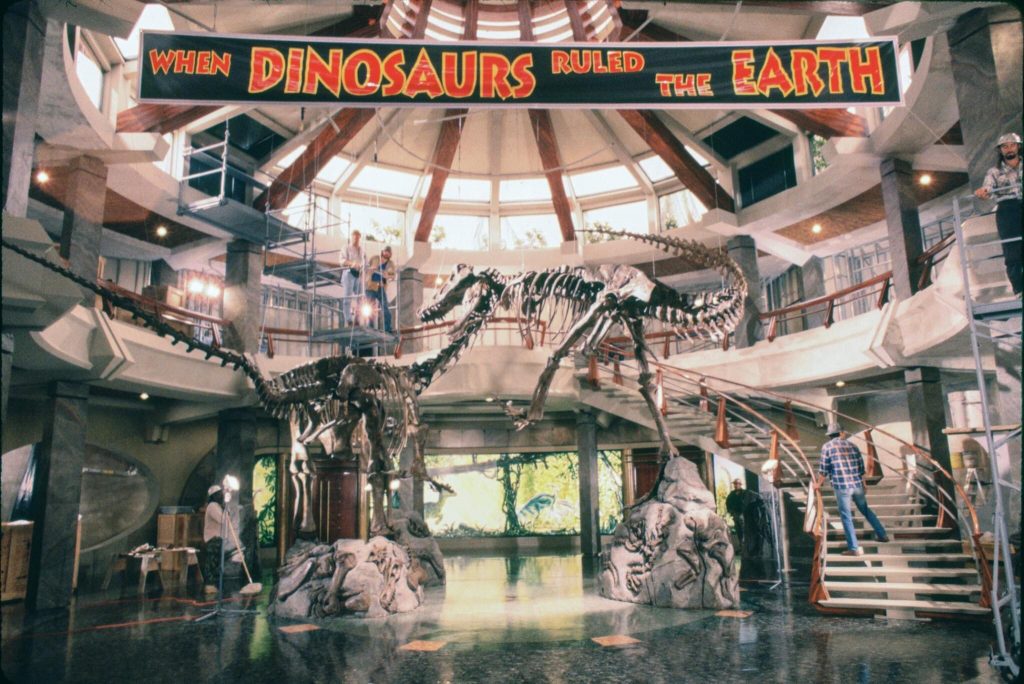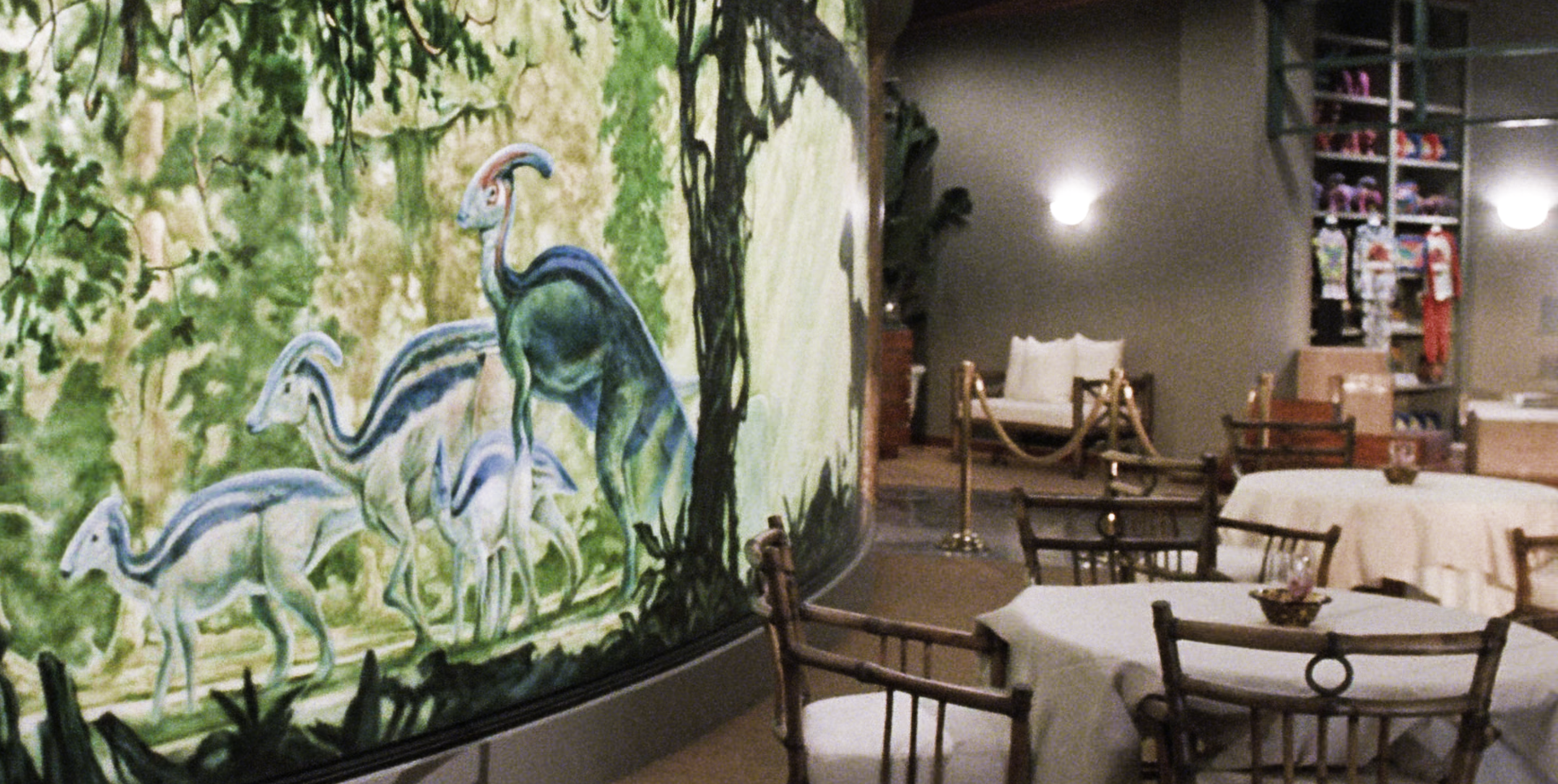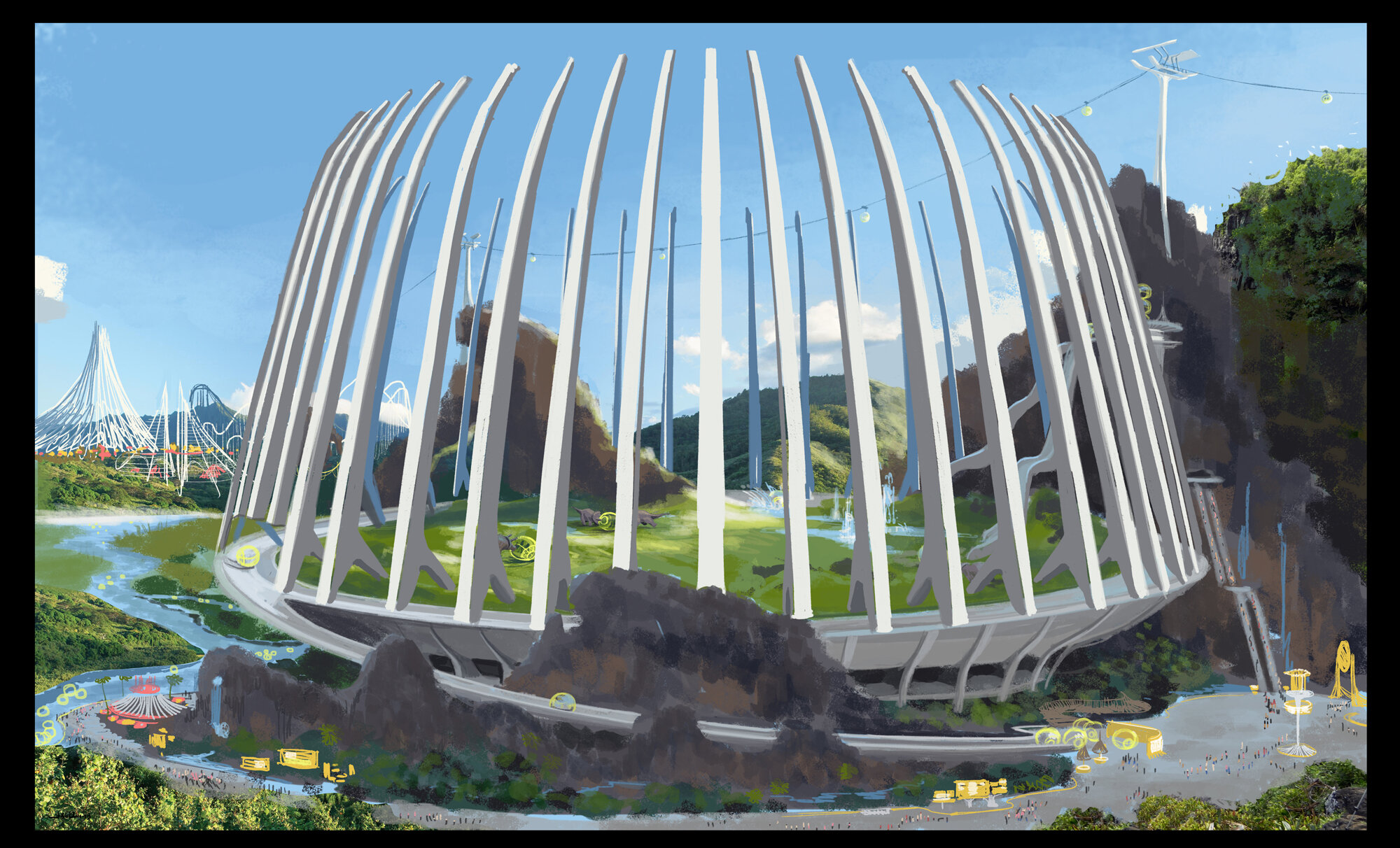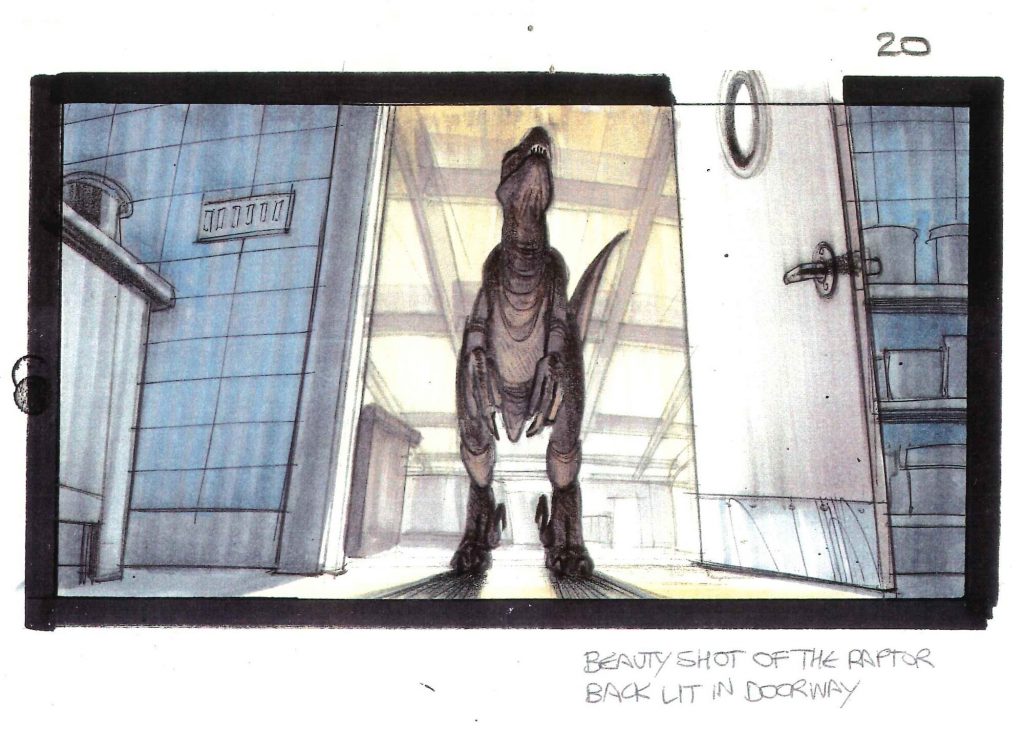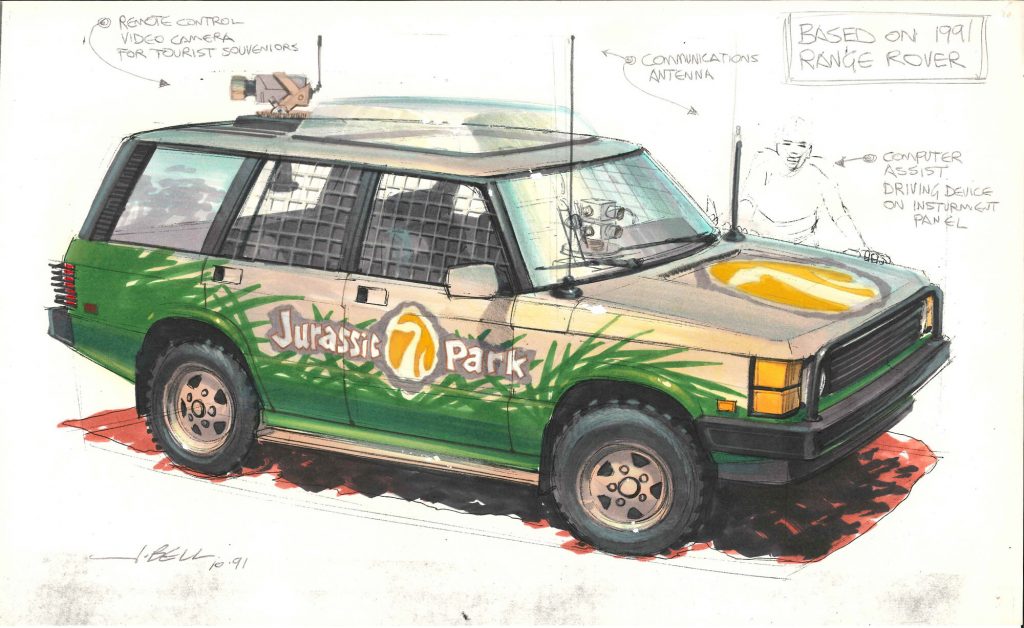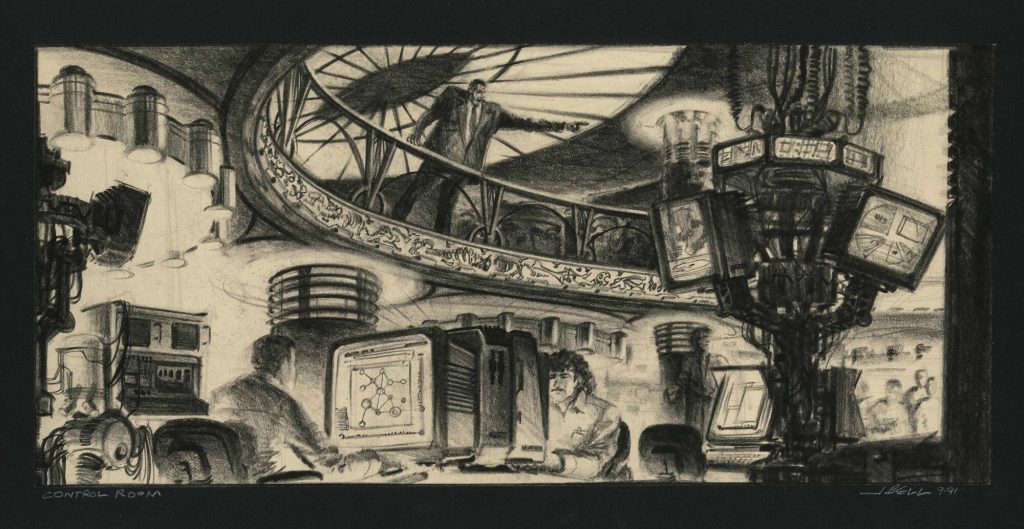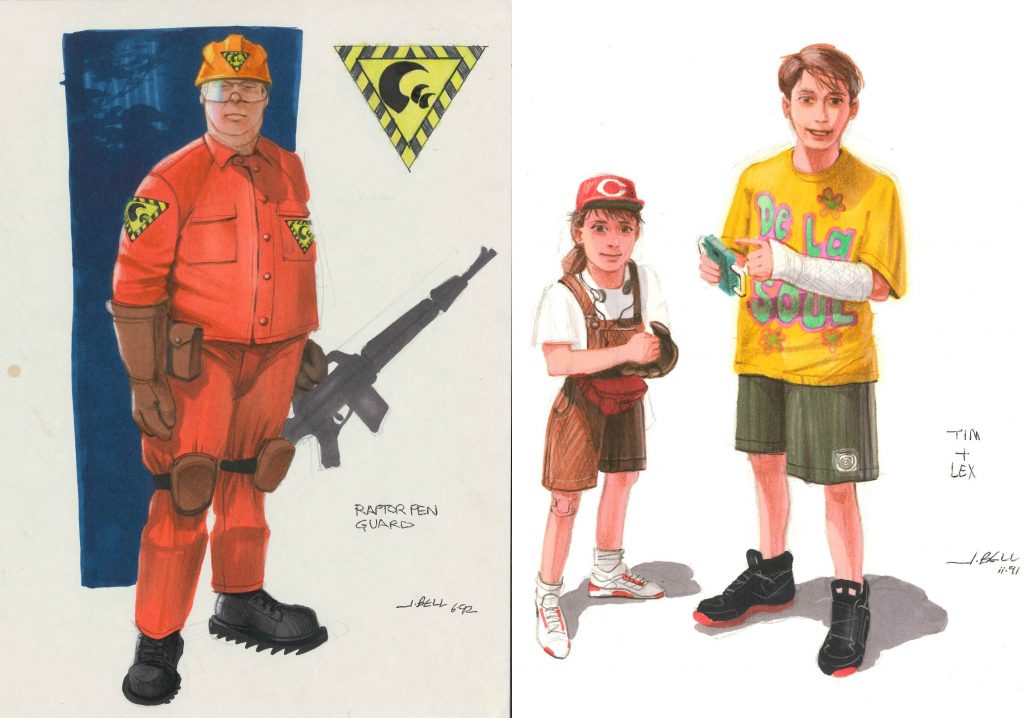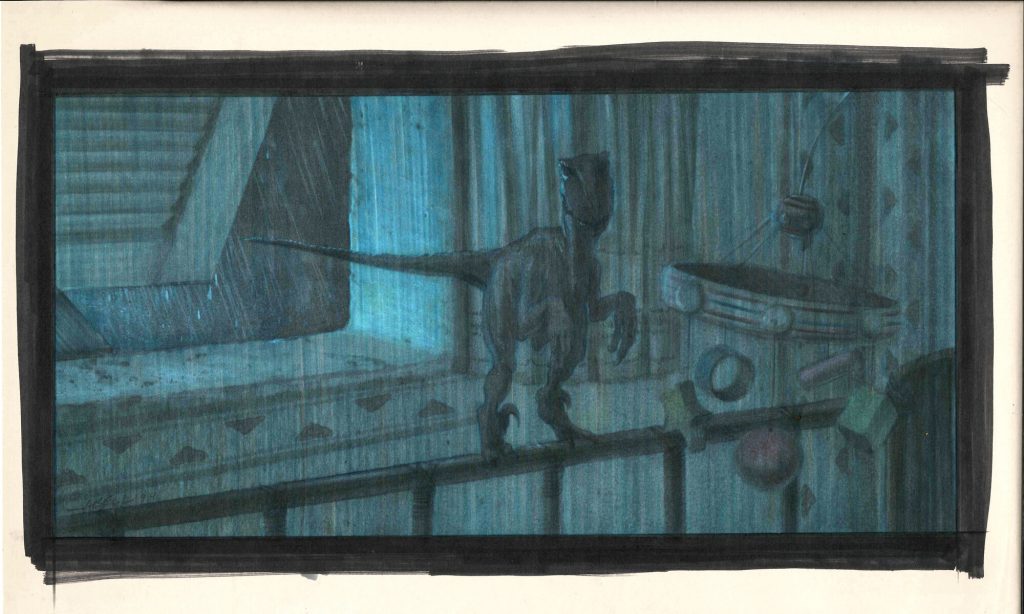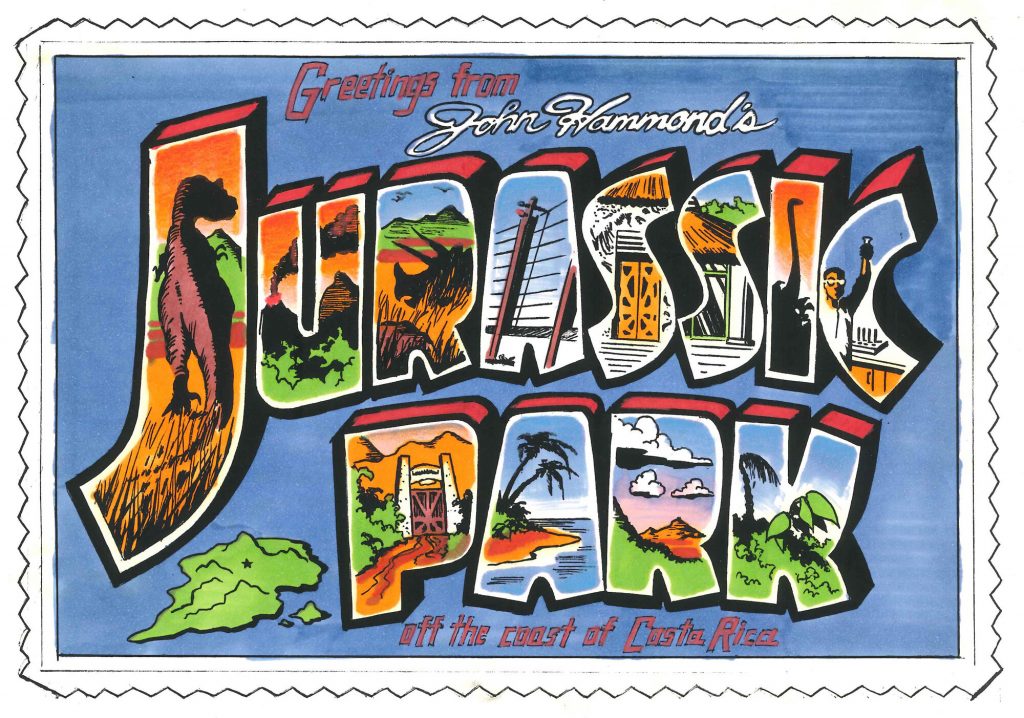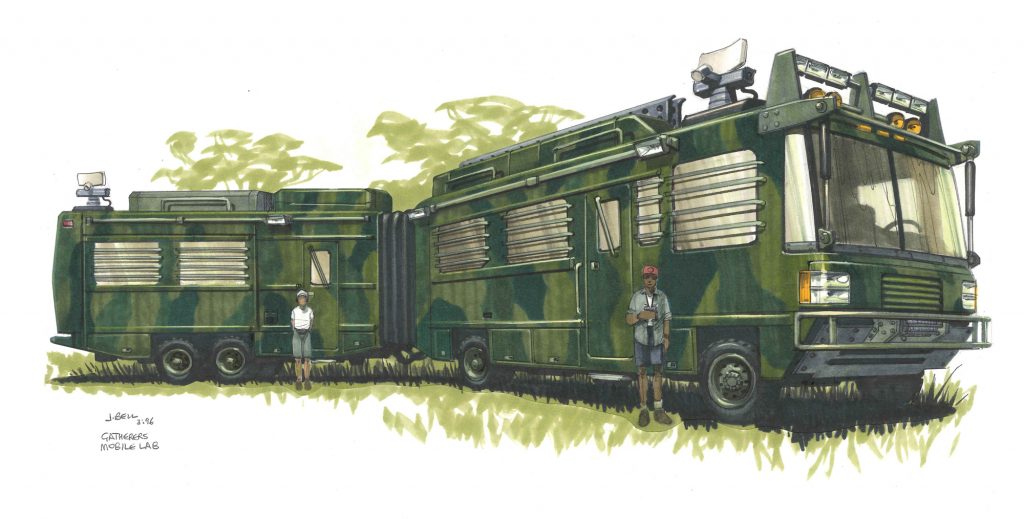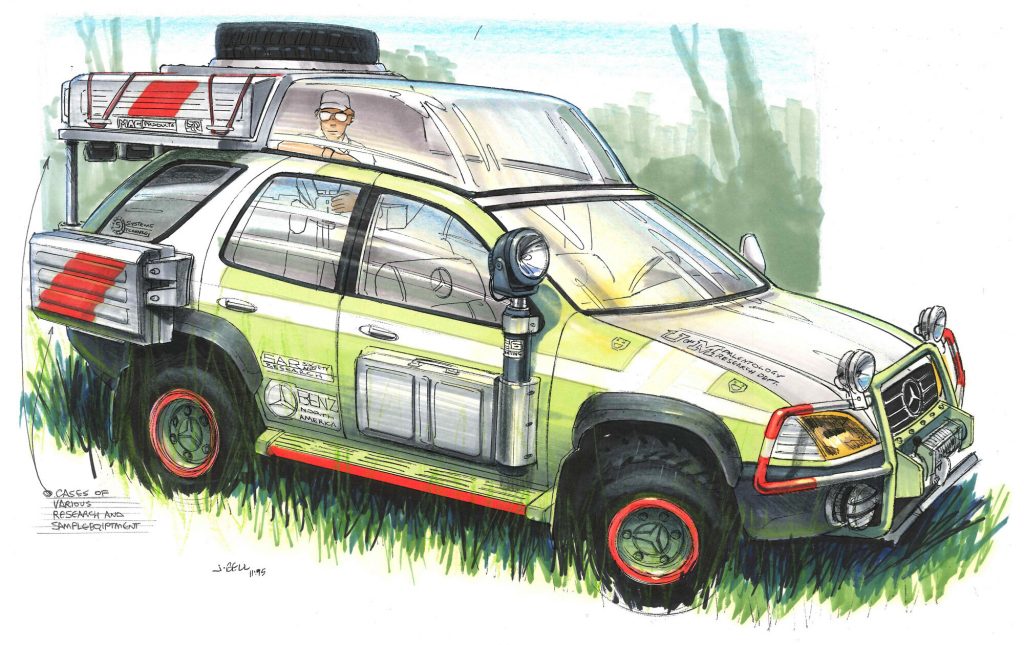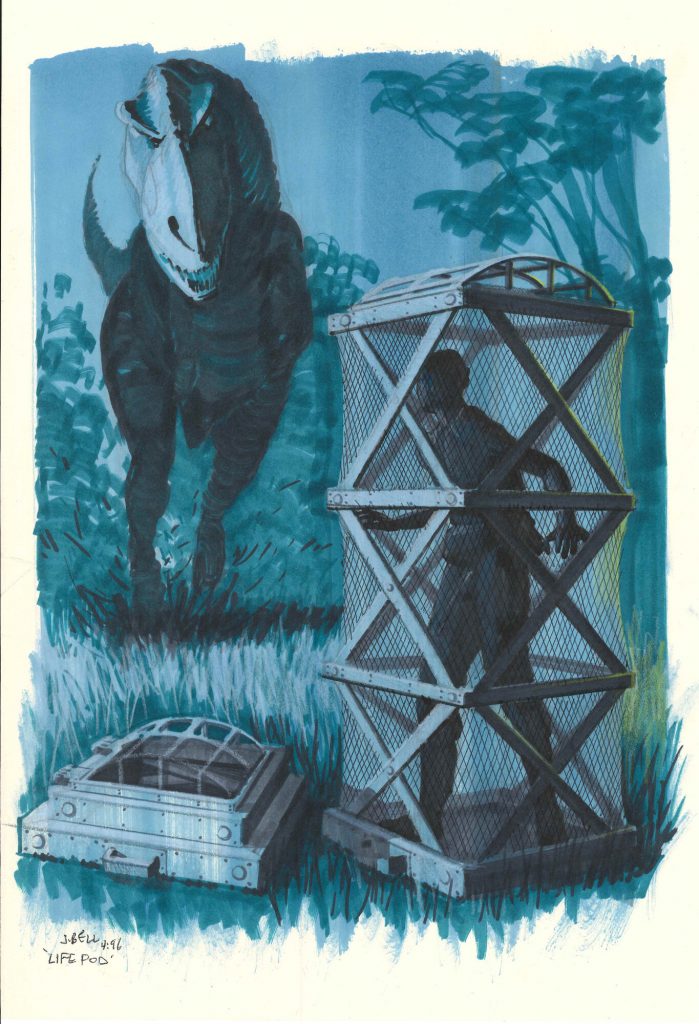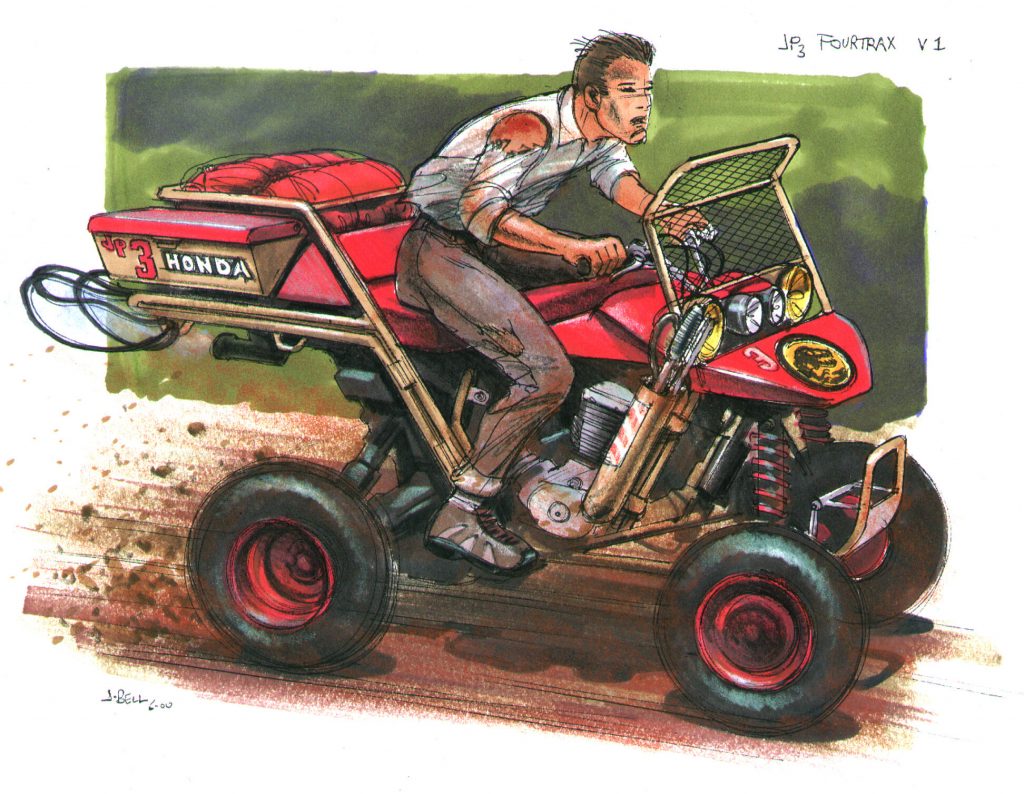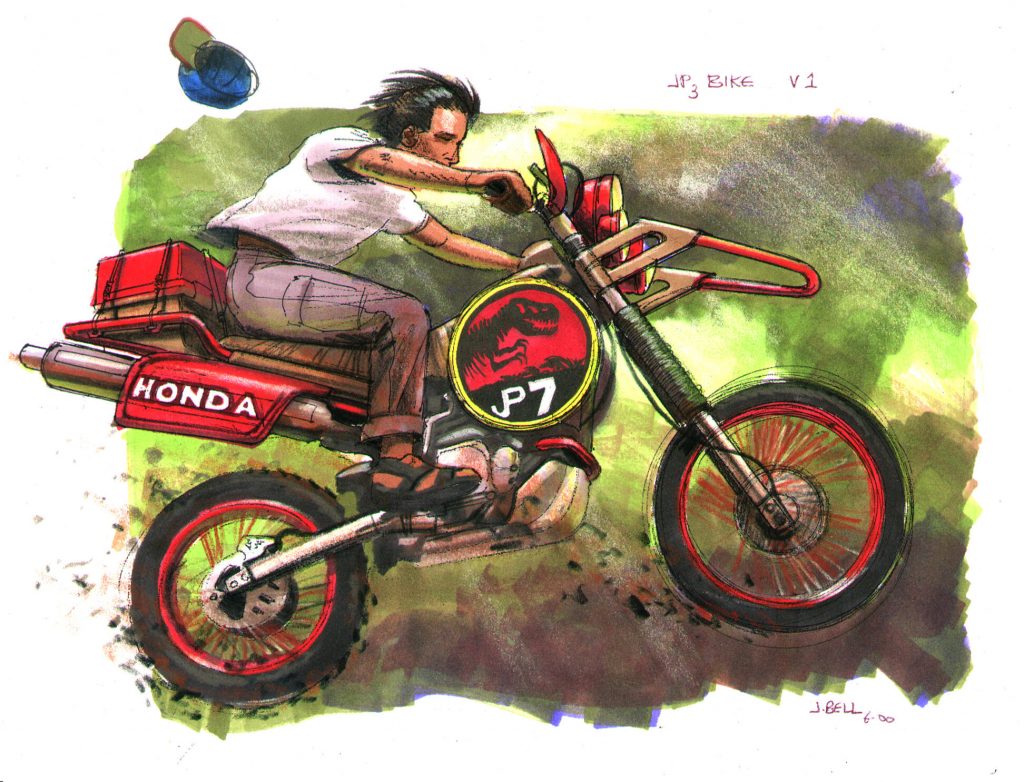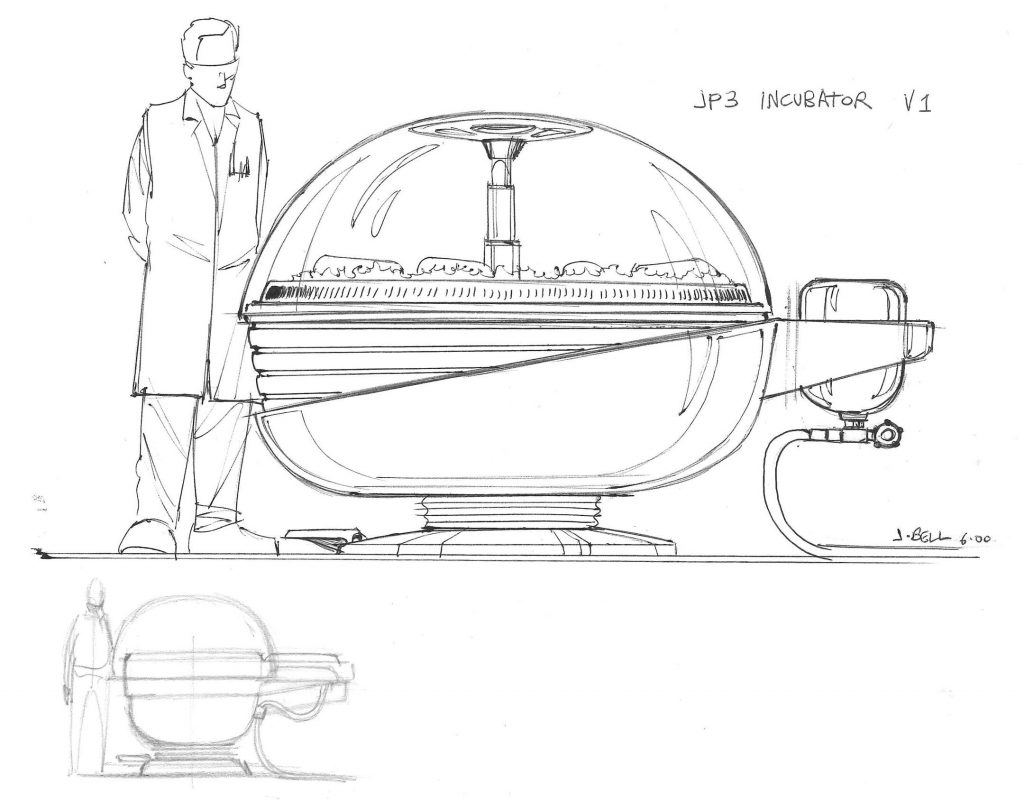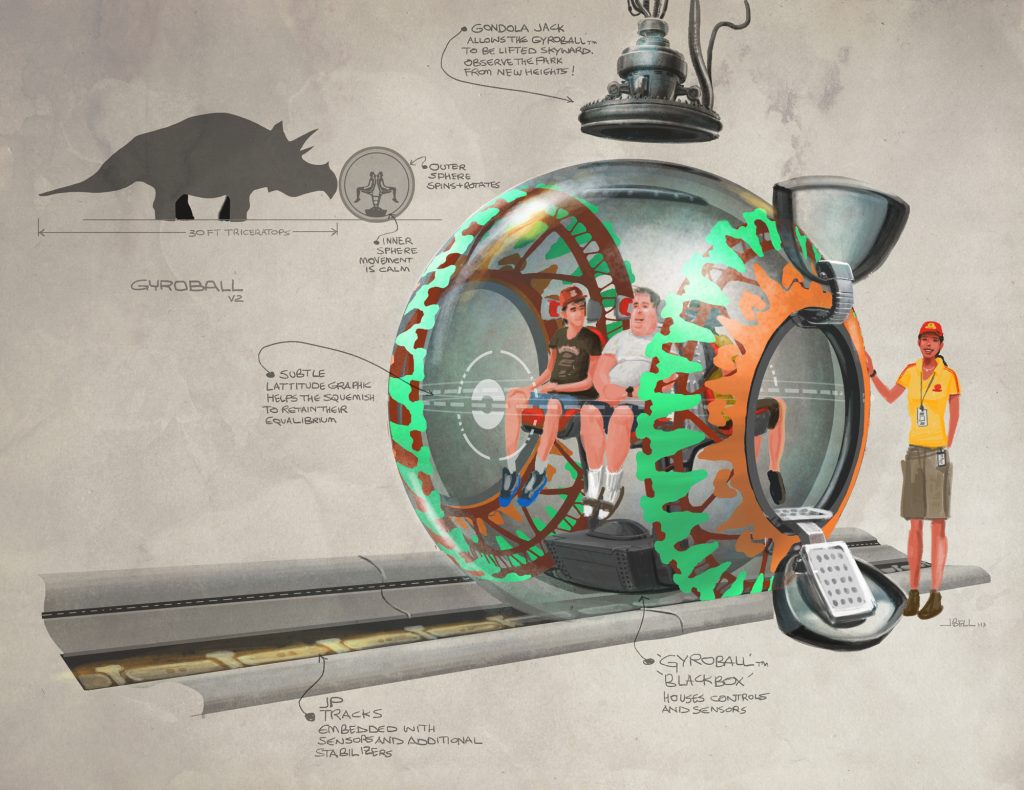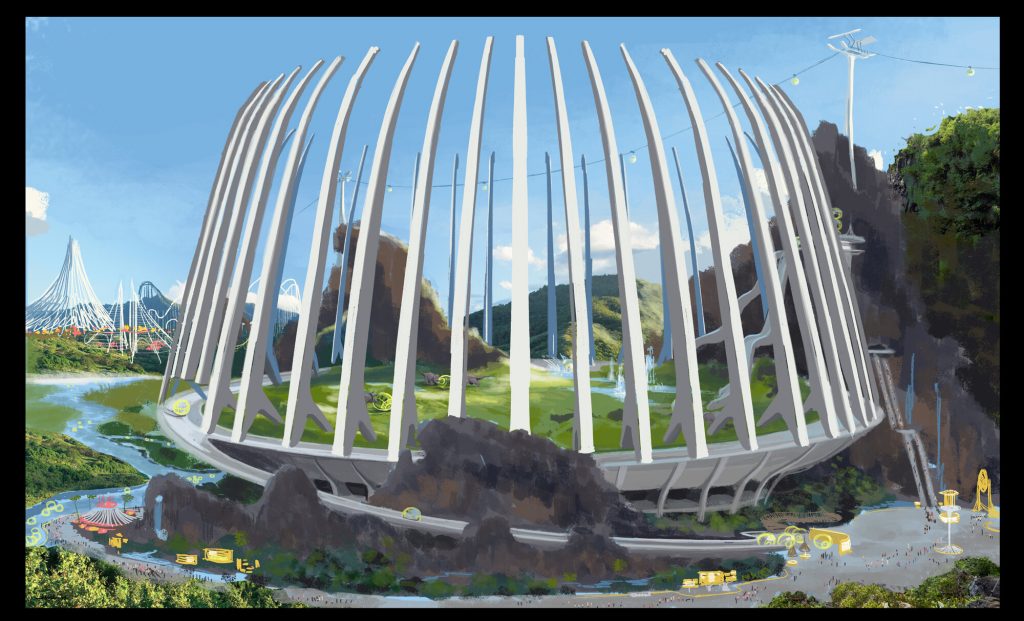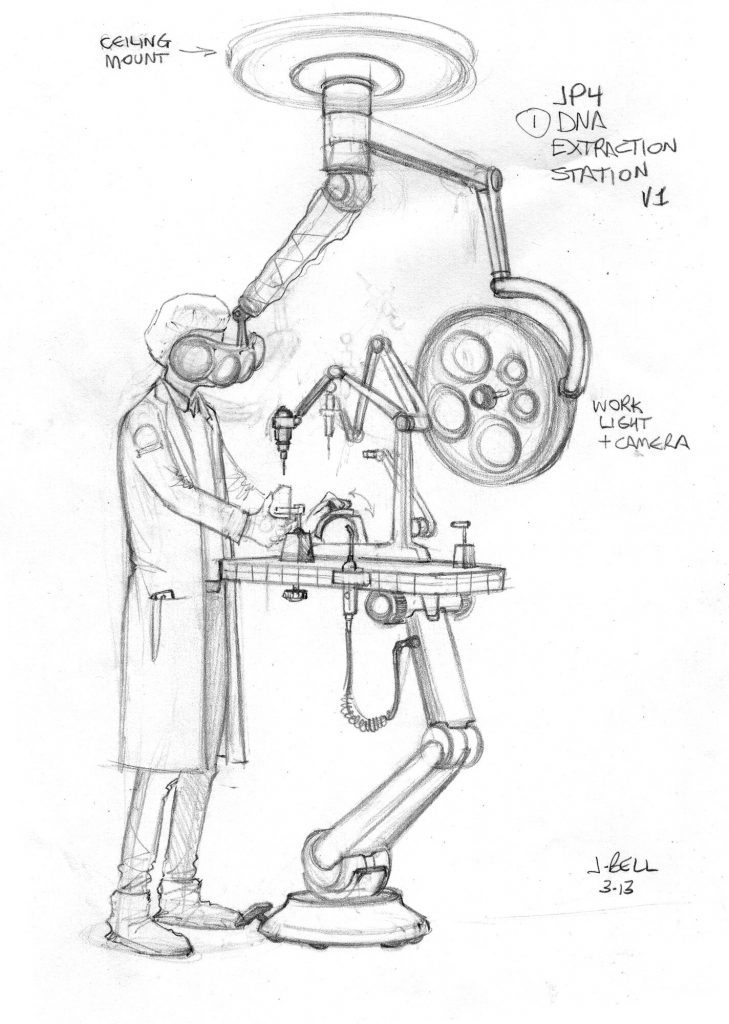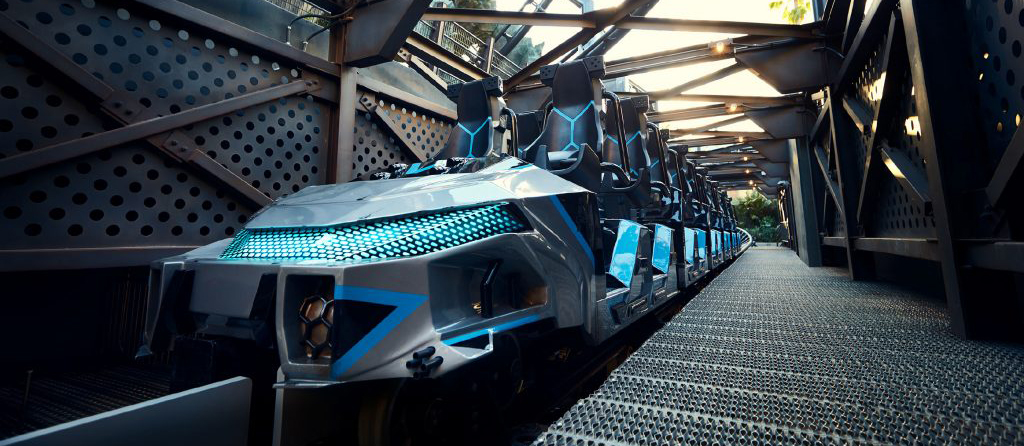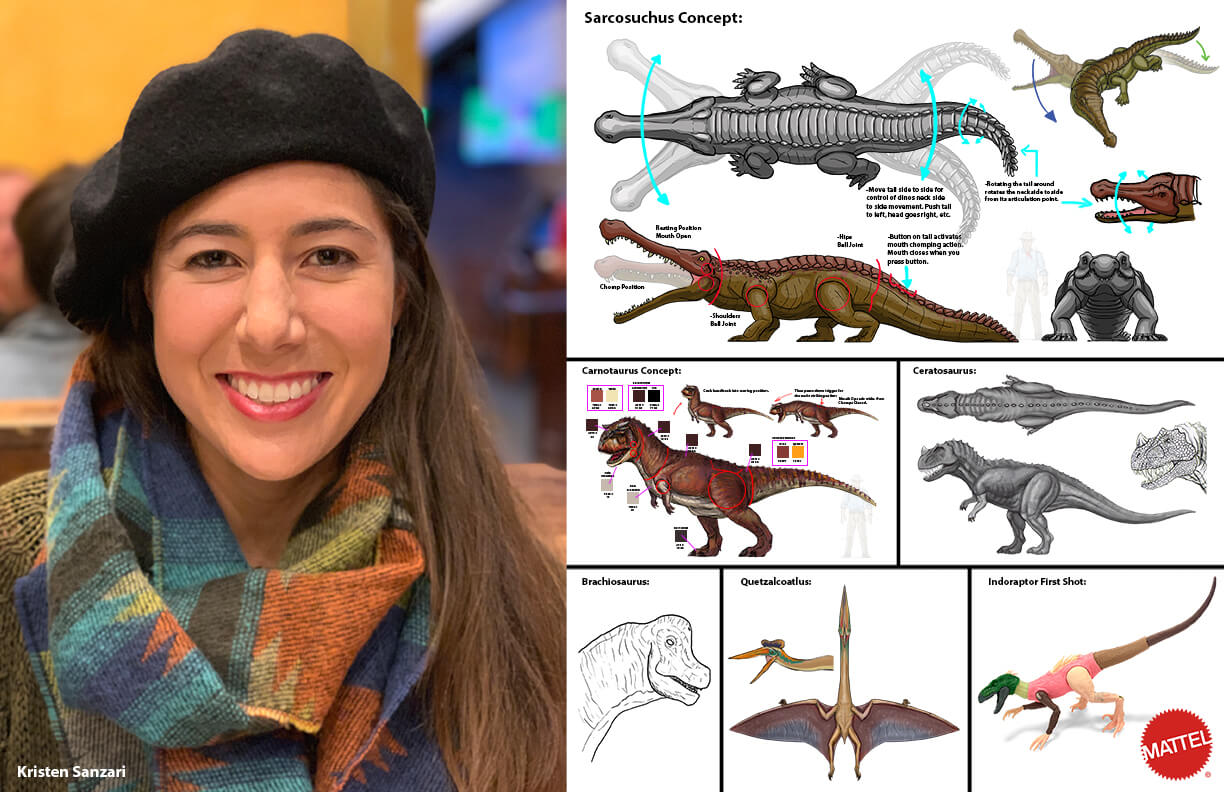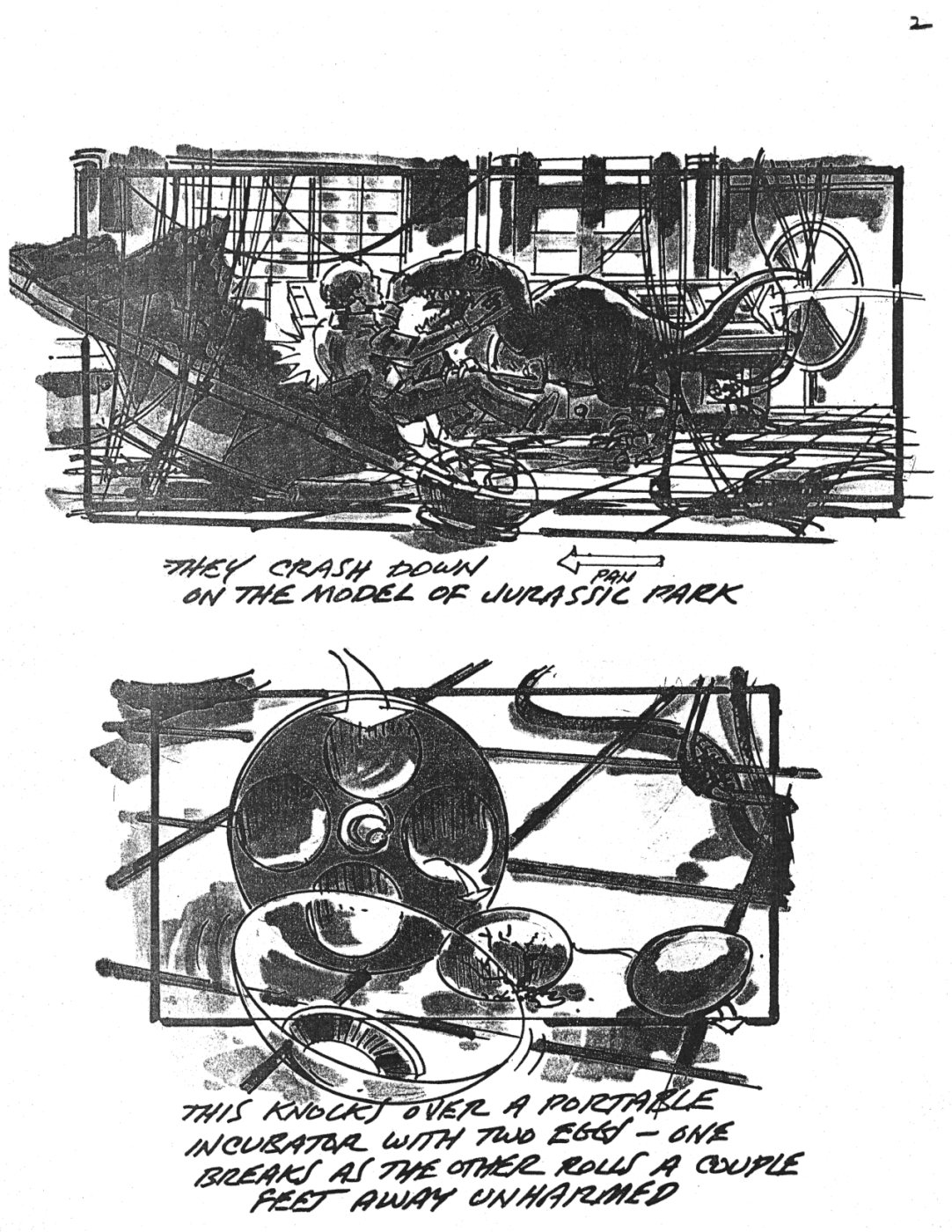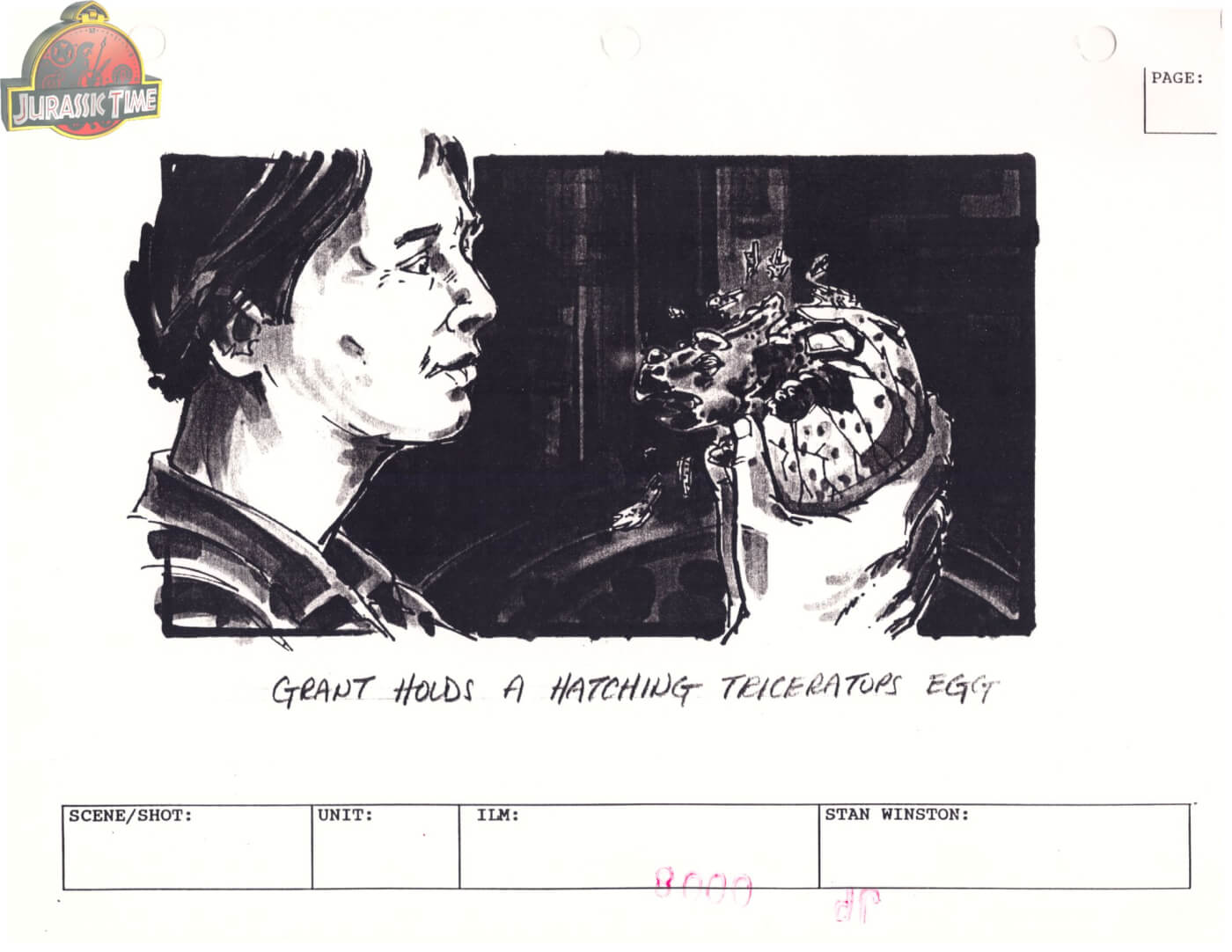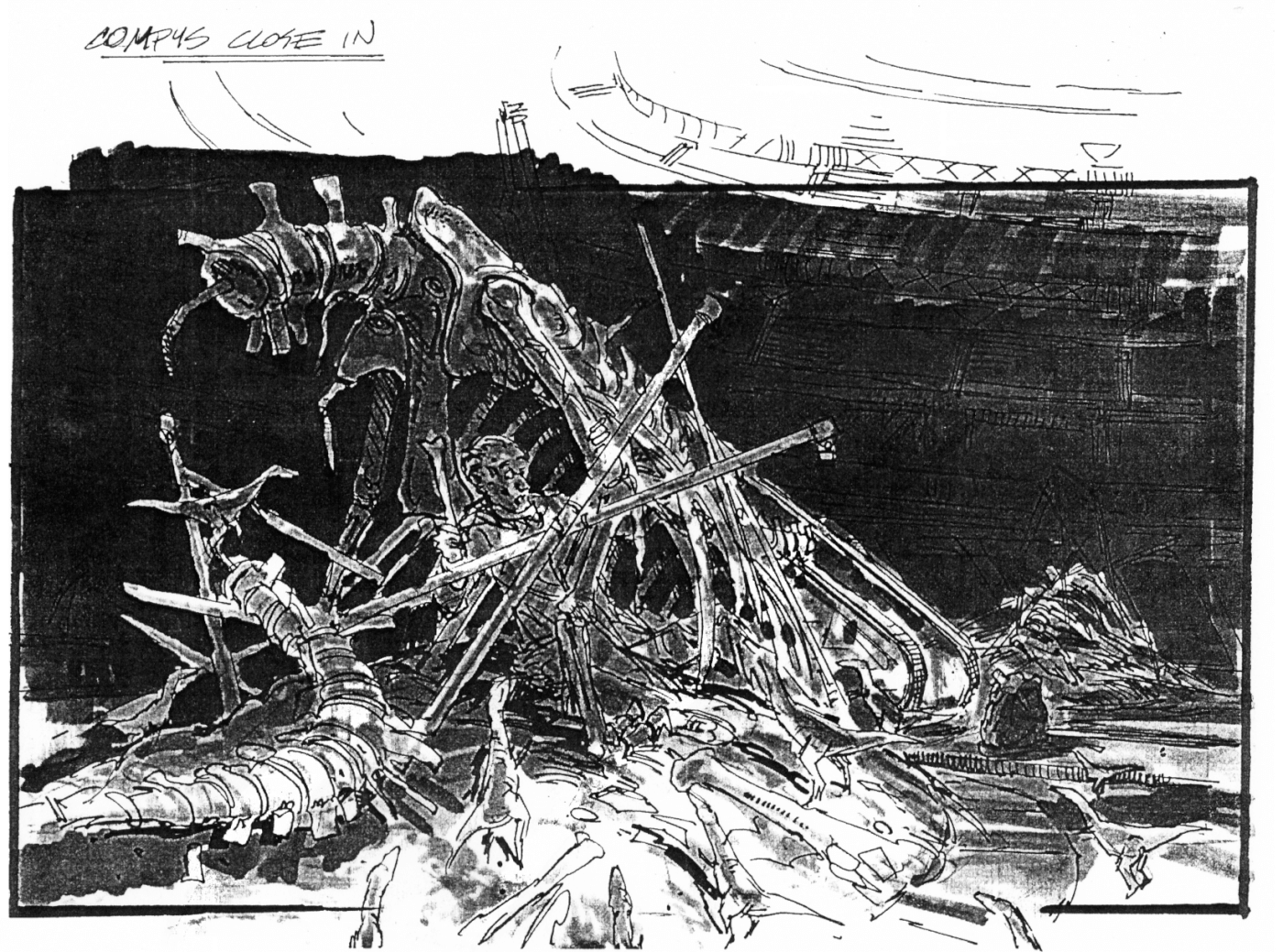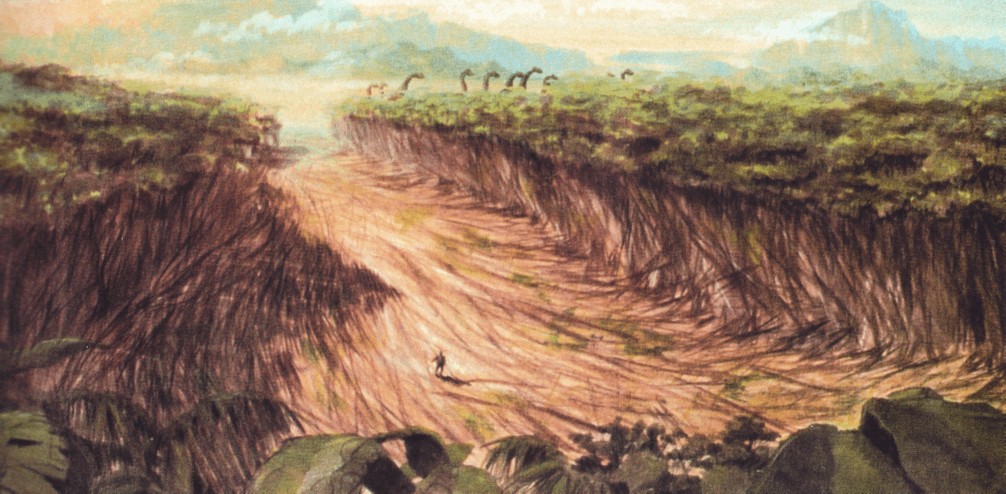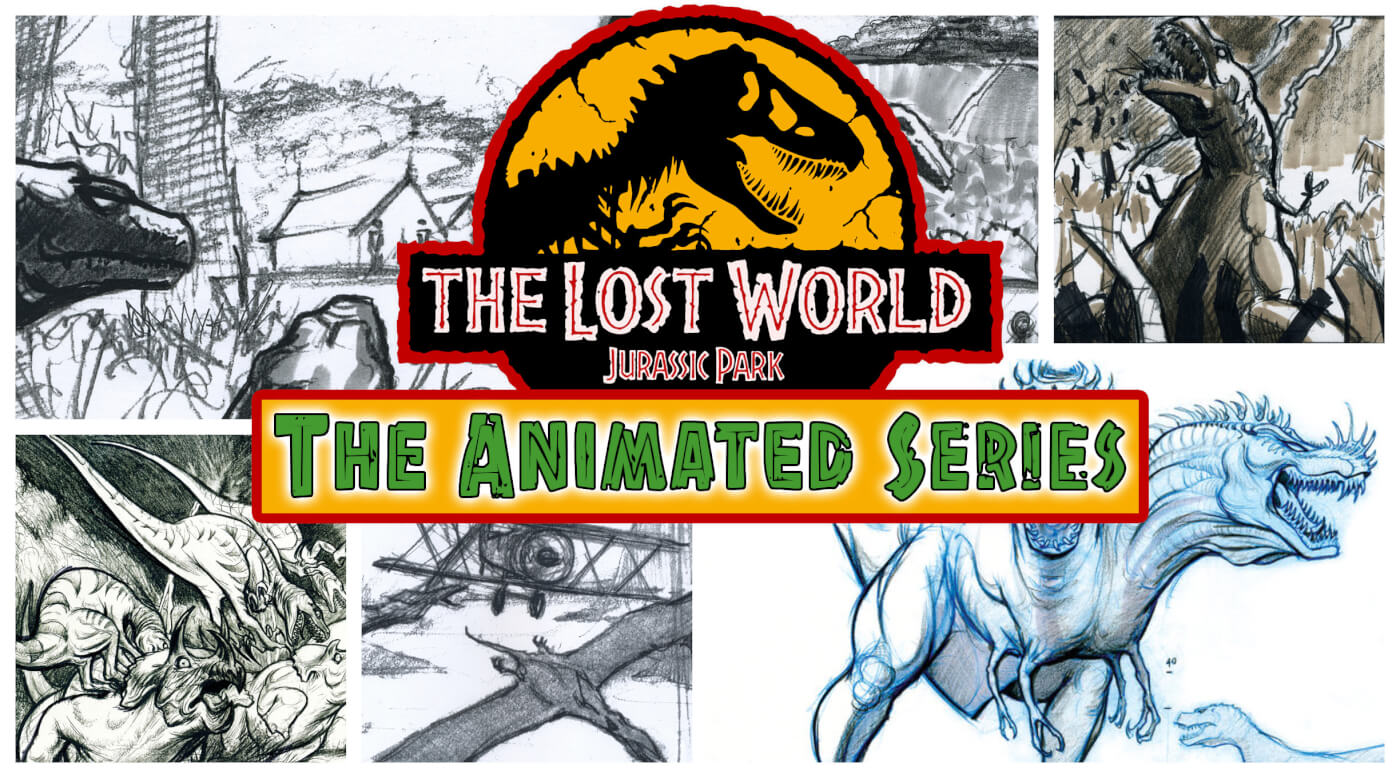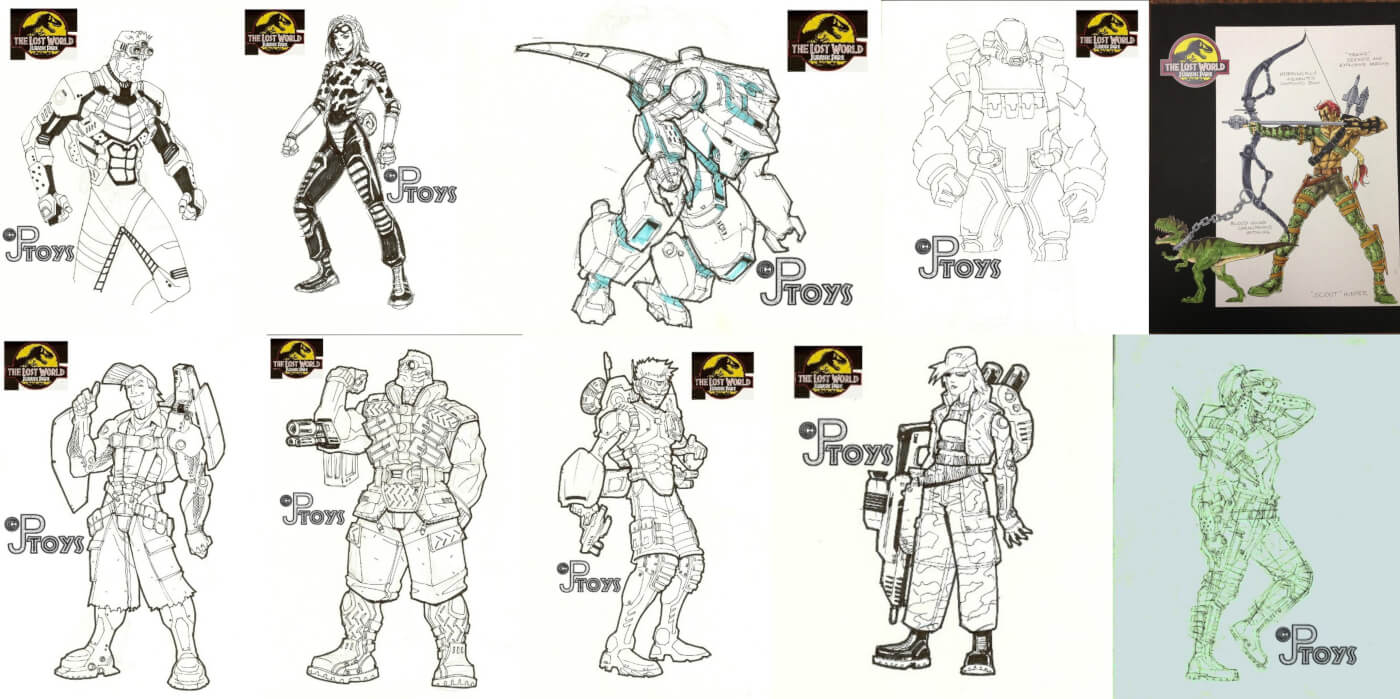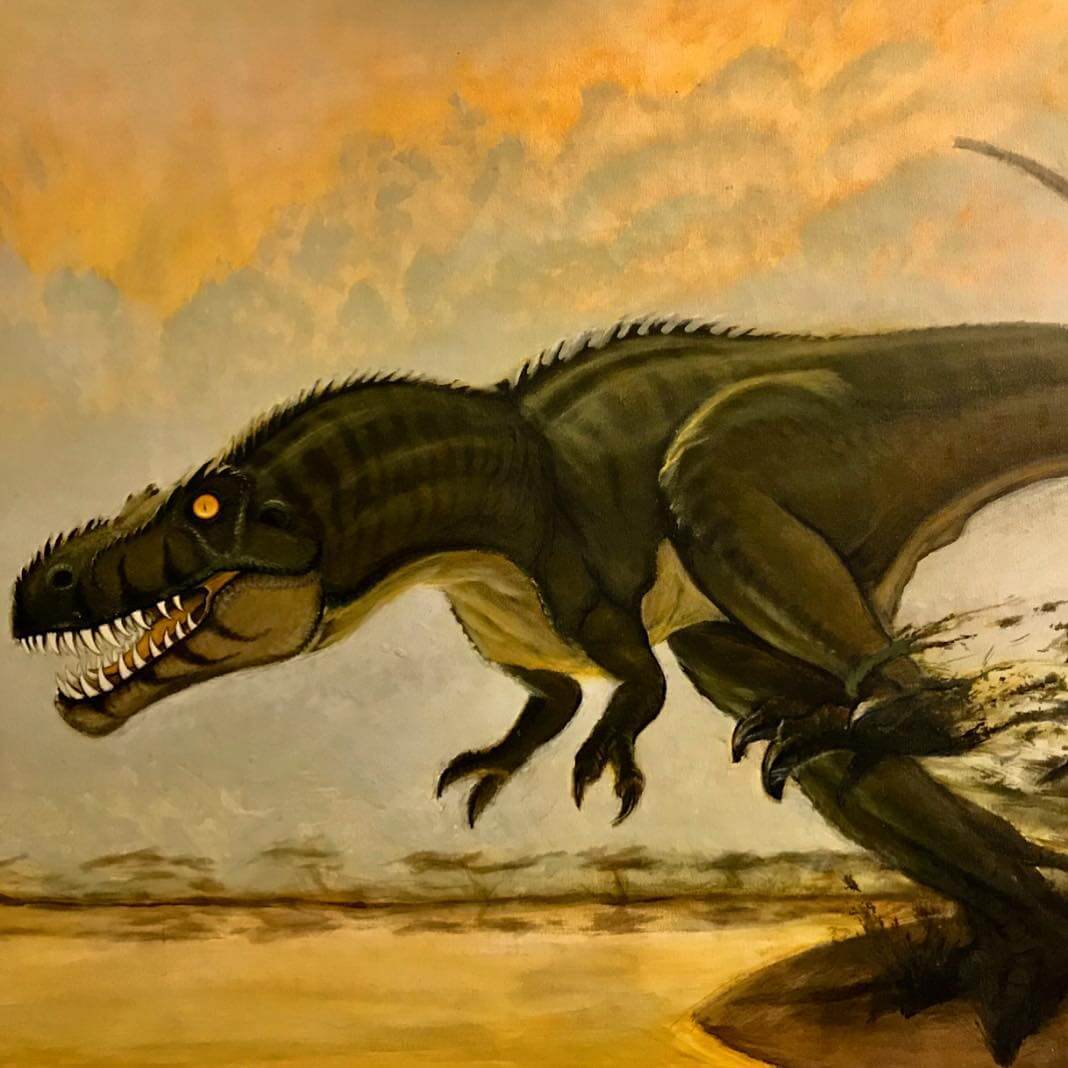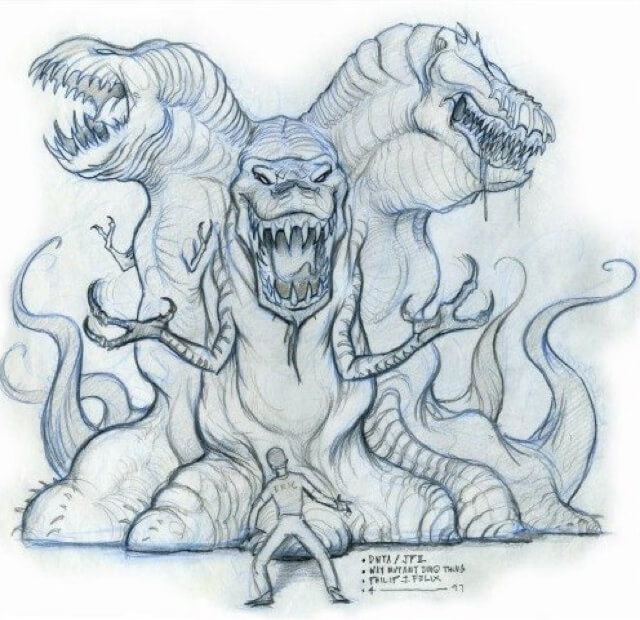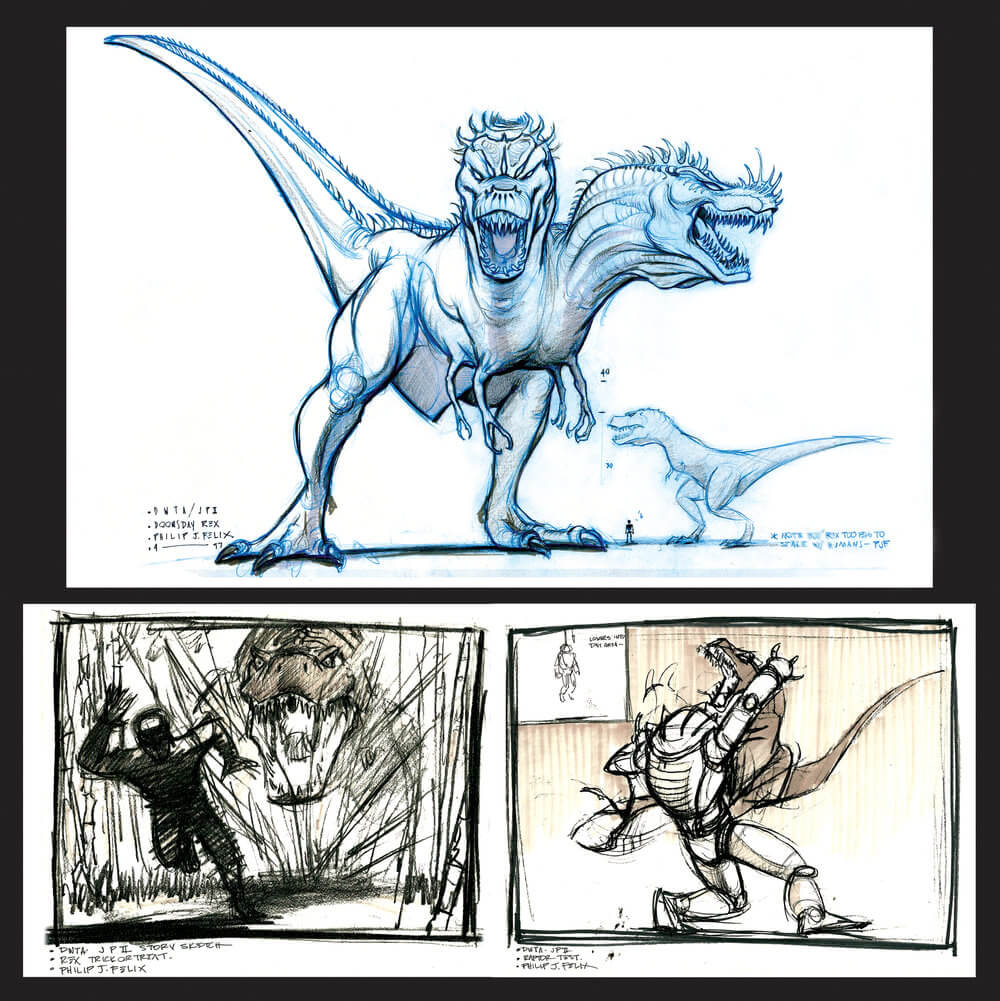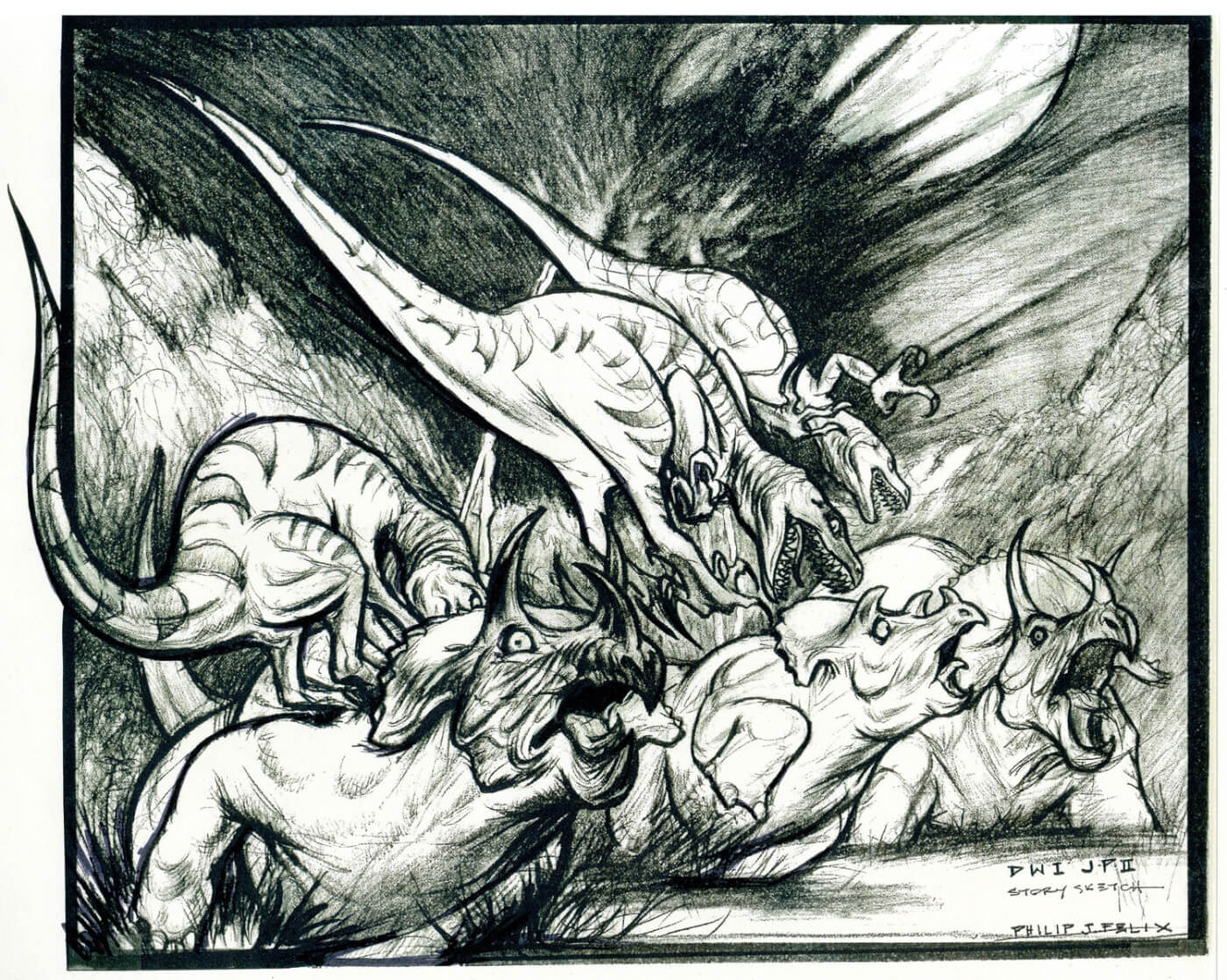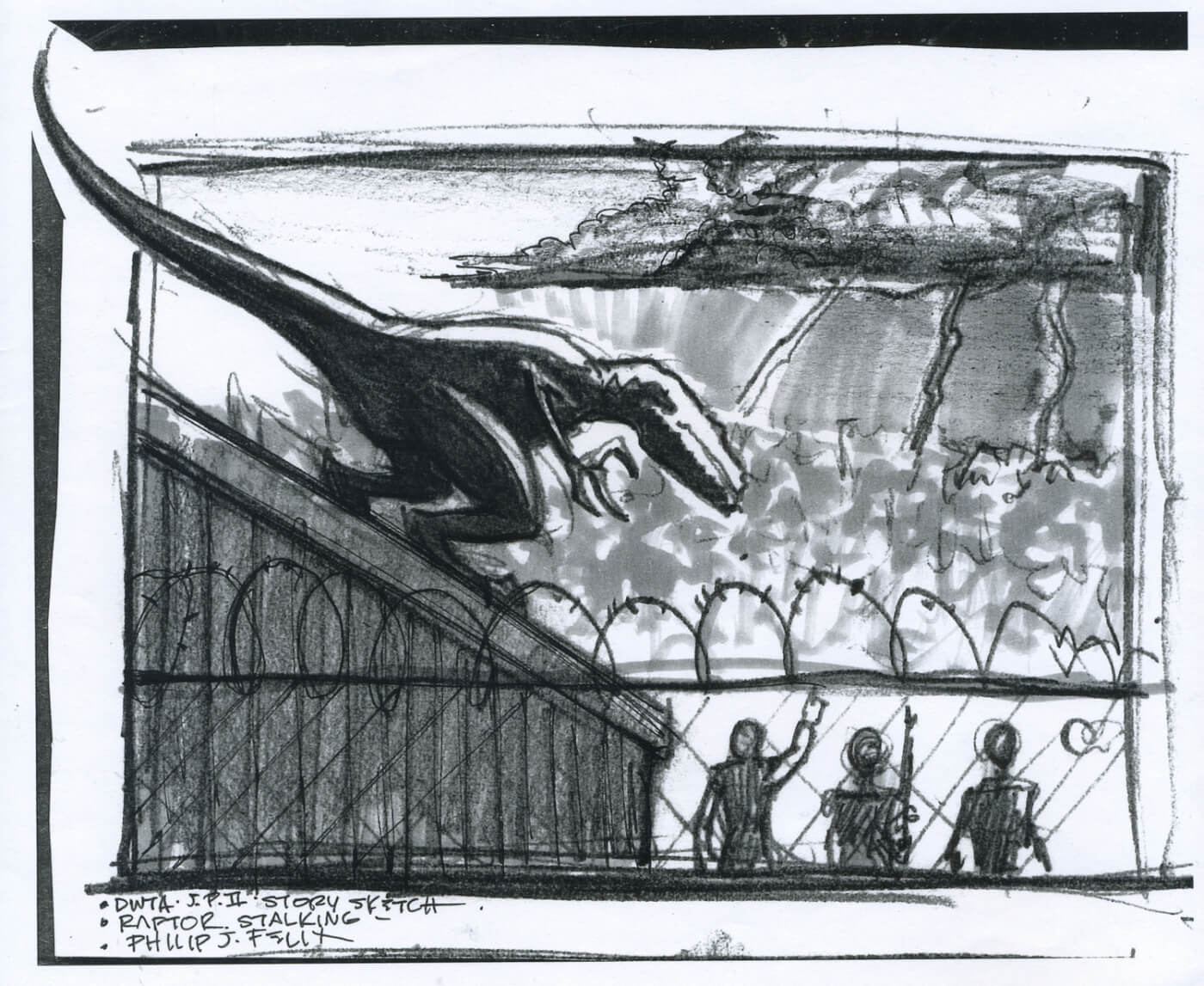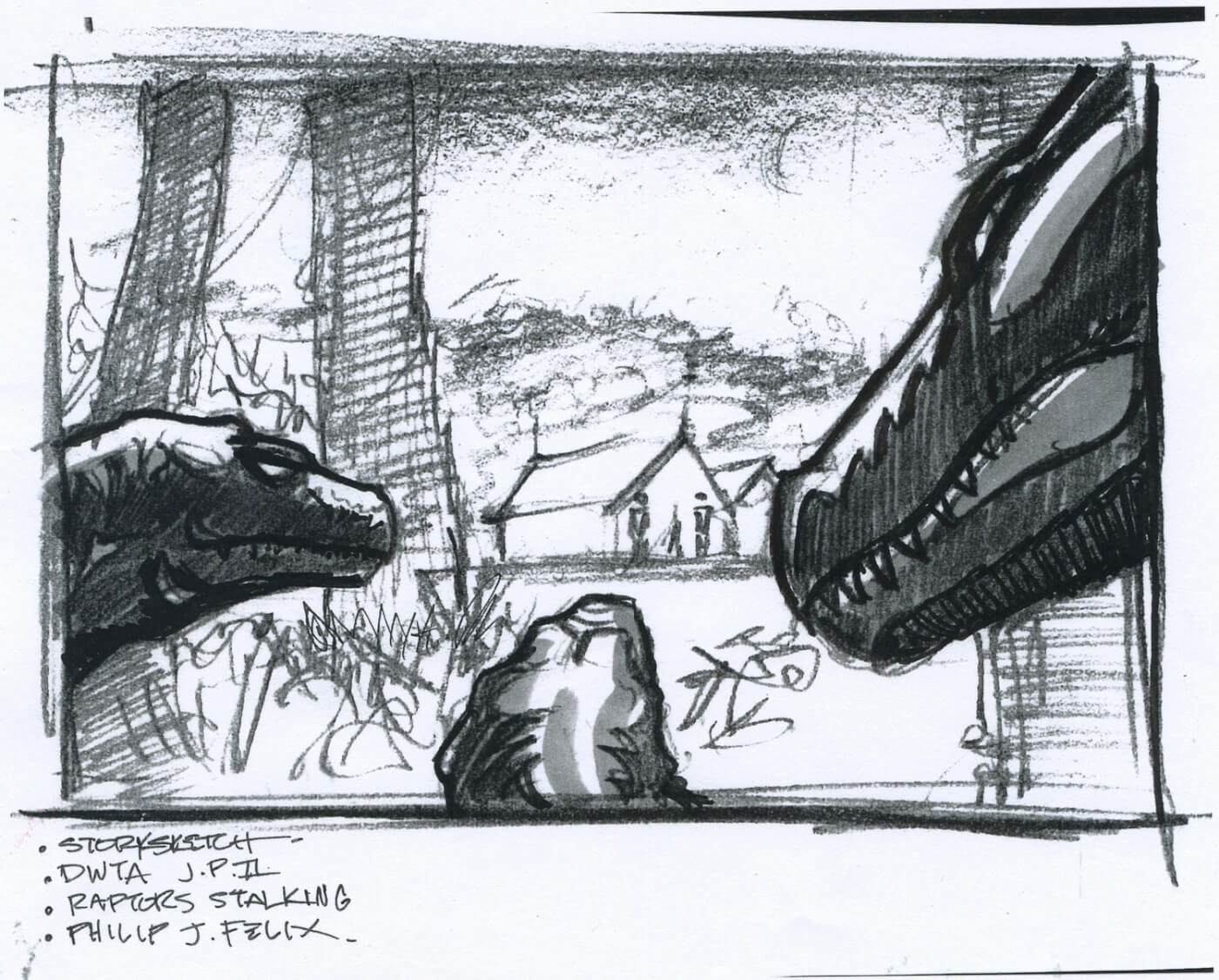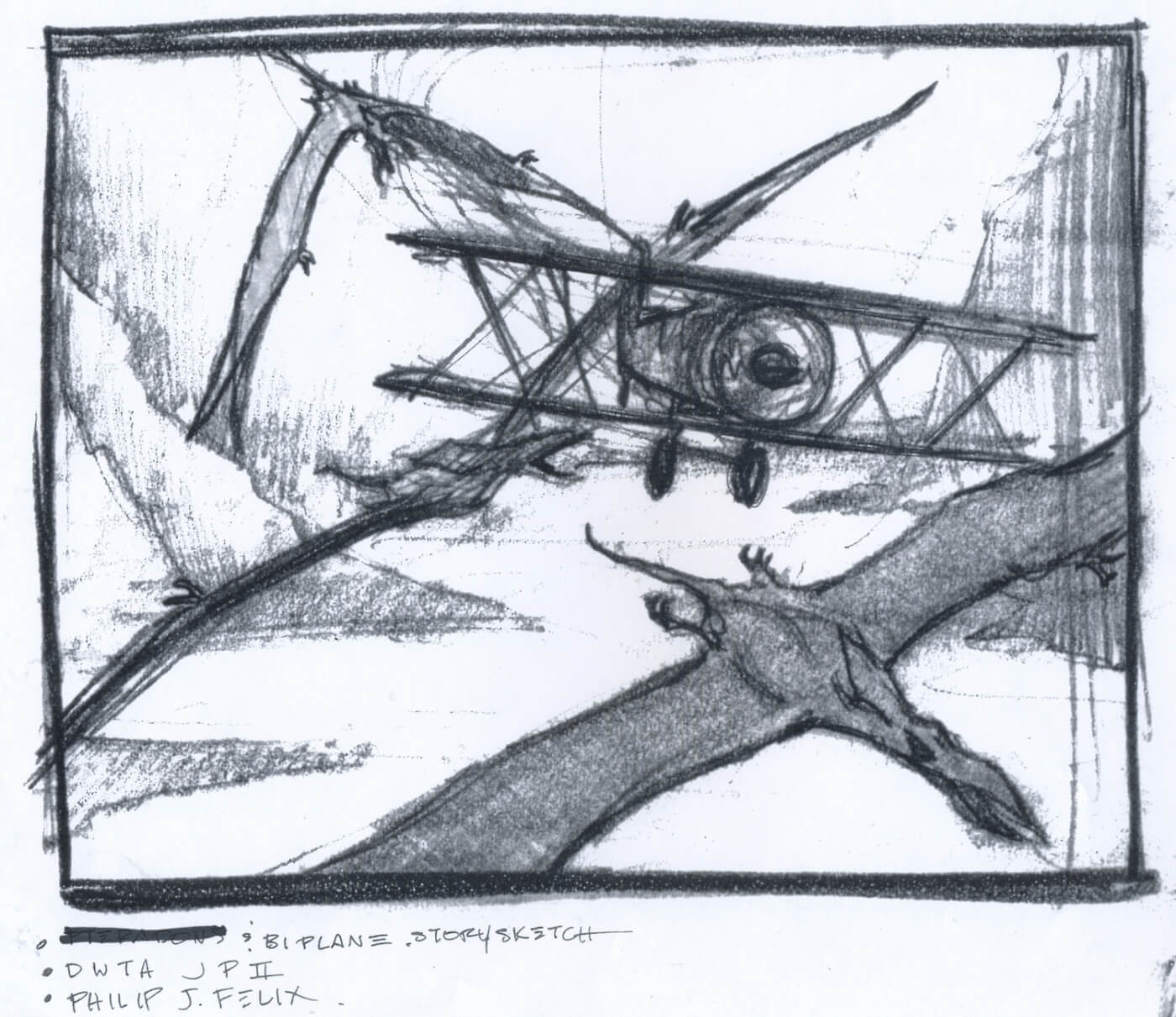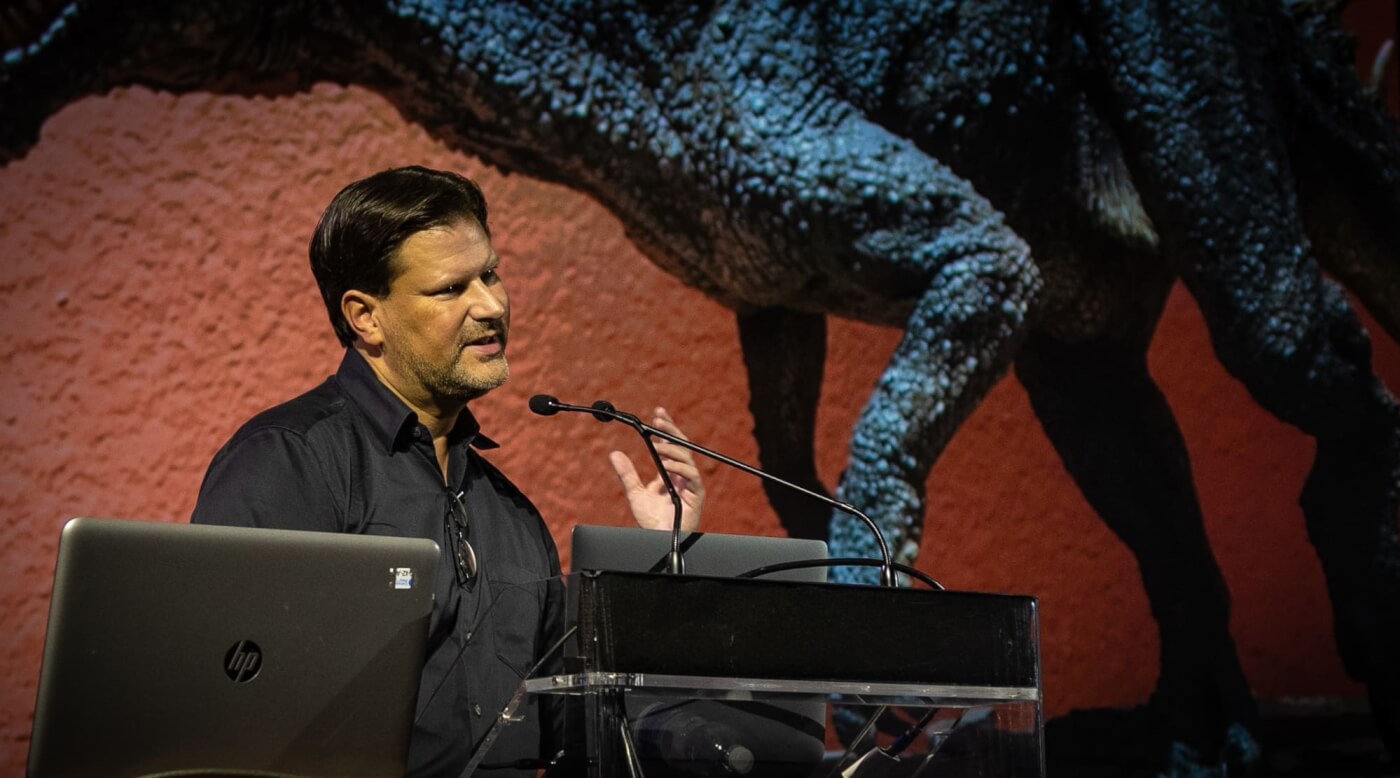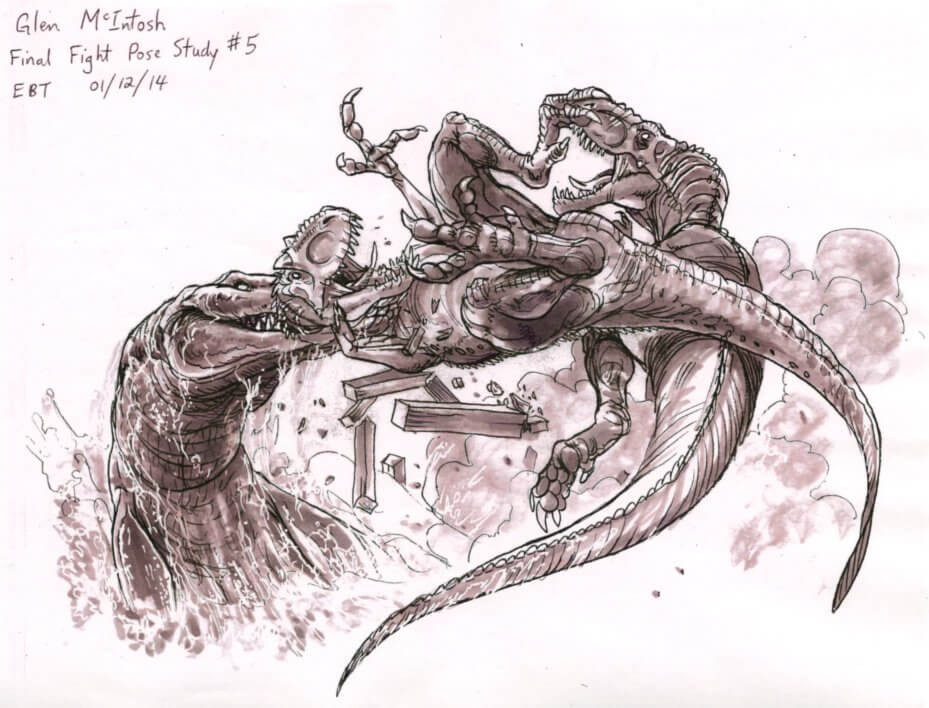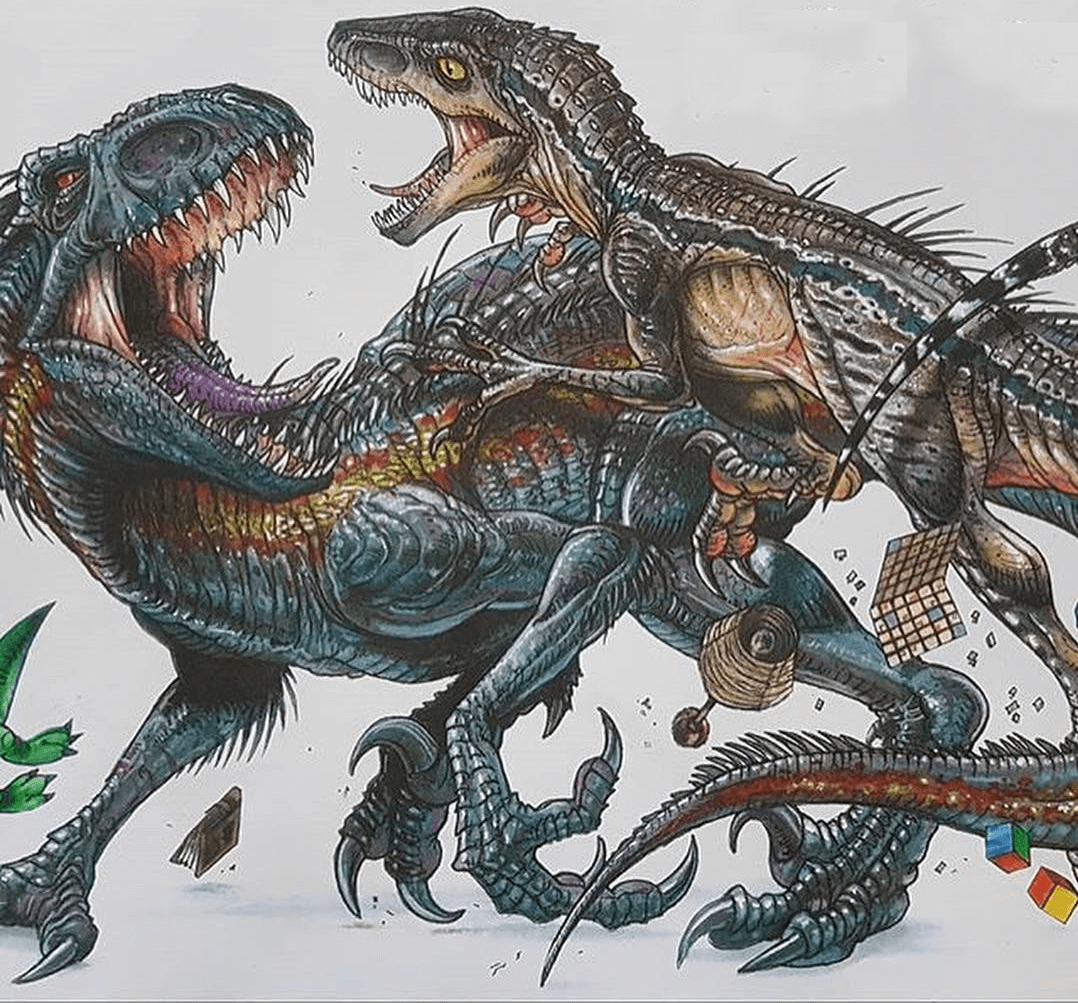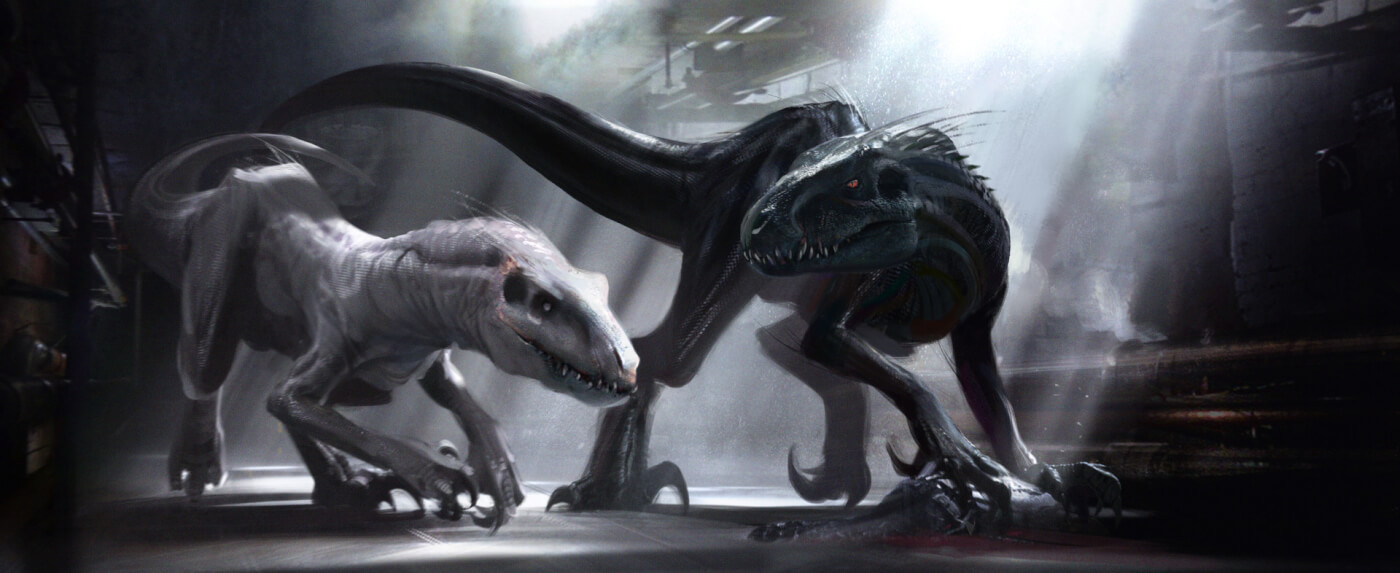Since their release in 2018 alongside Fallen Kingdom, Mattel’s Jurassic World line have taken over the toy aisle, and captured the attention of fans and collectors alike. Recently, we spoke to Kristen Sanzari – one of the designers on the Jurassic World toy line – about her work, and how she came to design dinosaurs for this continuously evolving range of action figures.
Kristen provided numerous design sheet images, that document part of the process that designing these toys undergo. In the images you can see reference photos, design change notes, and how things like action features are created.
Read on to learn about Kristen’s work directly from her, and of course, check out the images!
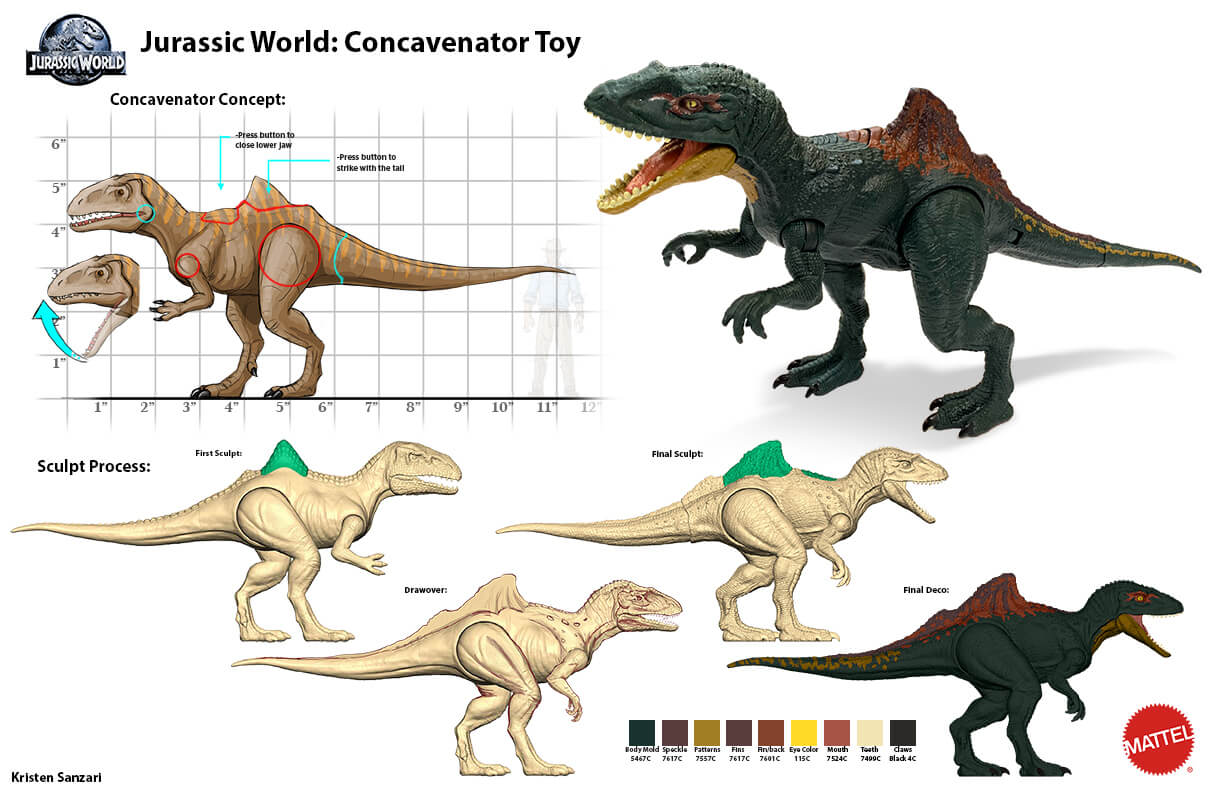
“I have been designing Jurassic World toys at Mattel for almost 3 years now, and people often ask how I got into toy design. So, I will give you a little background. I grew up with a love of drawing animals and my favorite animation characters. I loved my toys and loved animation. When it came time to go to college, I went to Cal Poly San Luis Obispo, where I studied graphic design and ran on the track team. I loved graphic design but knew I still wanted to study animation, so after graduating from Cal Poly, I moved to San Francisco, where I attended the Academy of Art University to get my master’s in visual development for animation.
After graduating, I got a job as a graphic designer/illustrator at a toy and publishing company called Artistic Studios (now Bendon Publishing). I worked on licensed craft sets and toys and loved it, but I was still mostly doing graphic design and package design, with only a little bit of illustration here and there. Wanting to do more concept art, I began applying to jobs at animation studios and toy companies in LA. I interviewed with Mattel for the Jurassic World product design position with a portfolio full of concept art for animation. Although similar in a lot of ways, I had no toy designs to show. So, after the interview I drew up some toy concepts focused on Jurassic, and luckily my now boss had faith I could design toys and I got the job.
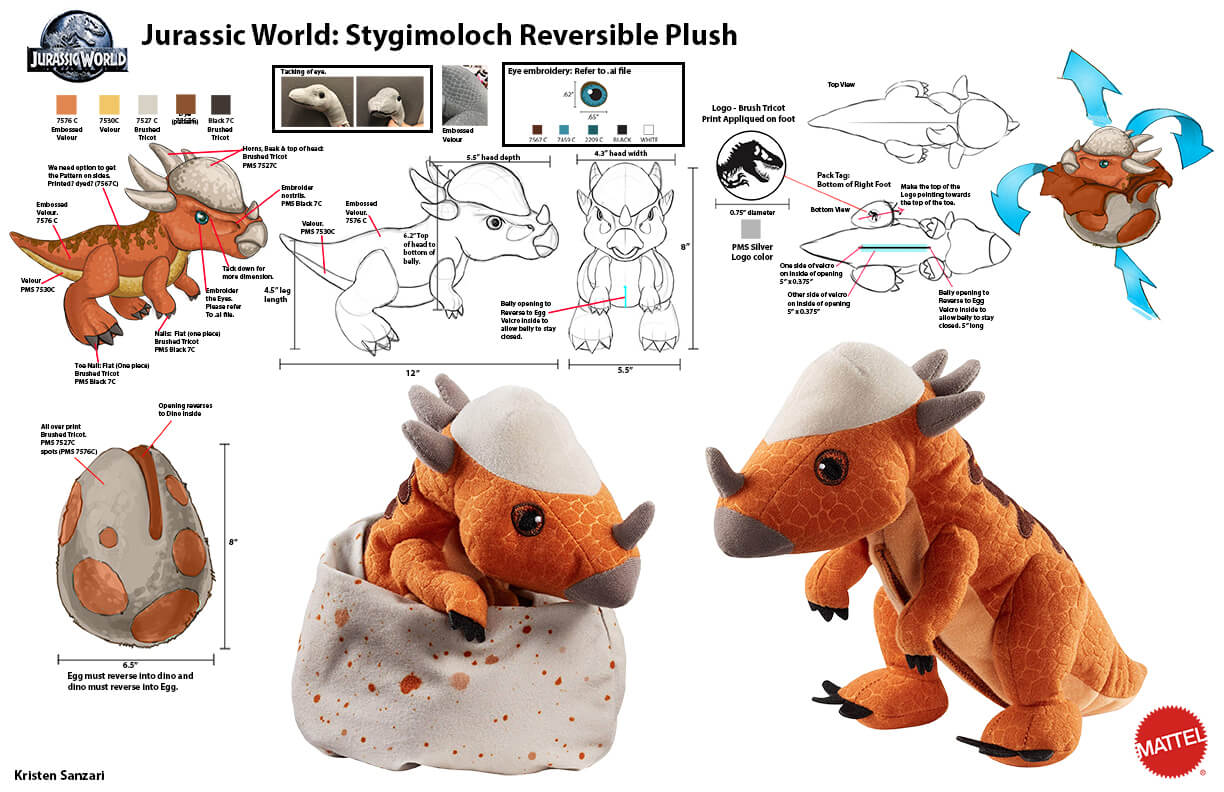
Was I a dinosaur expert or a Jurassic park fanatic prior to getting the job? No, but I liked dinosaurs, I had seen some of the movies, and most of all I loved drawing and learning about animals. So, I made it my mission to learn as much as I could about dinosaurs and the Jurassic Park franchise when I began working on the brand. I watched all the movies a bunch of times, took several paleontology courses online, listened to the Jurassic Outpost Podcast, bought and read multiple dinosaur books and made it a point to learn about and know every dinosaur we designed.
When designing our toys, we begin by brainstorming about what we want that toy to do. Is it a T. Rex that roars and has a massive chomp? Or is it a Pachycephalosaurus that rams its head? There are usually so many great and crazy ideas that come up in brainstorms, but we always do our best to make sure the function of our toys are realistic, on brand, and accentuate what the dinosaur would have done in real life. Something we also focus on is our scale, we do our best to make all our dinosaurs in scale to a 3¾” human action figure, which really allows you to imagine how massive some of these dinosaurs were in real life.
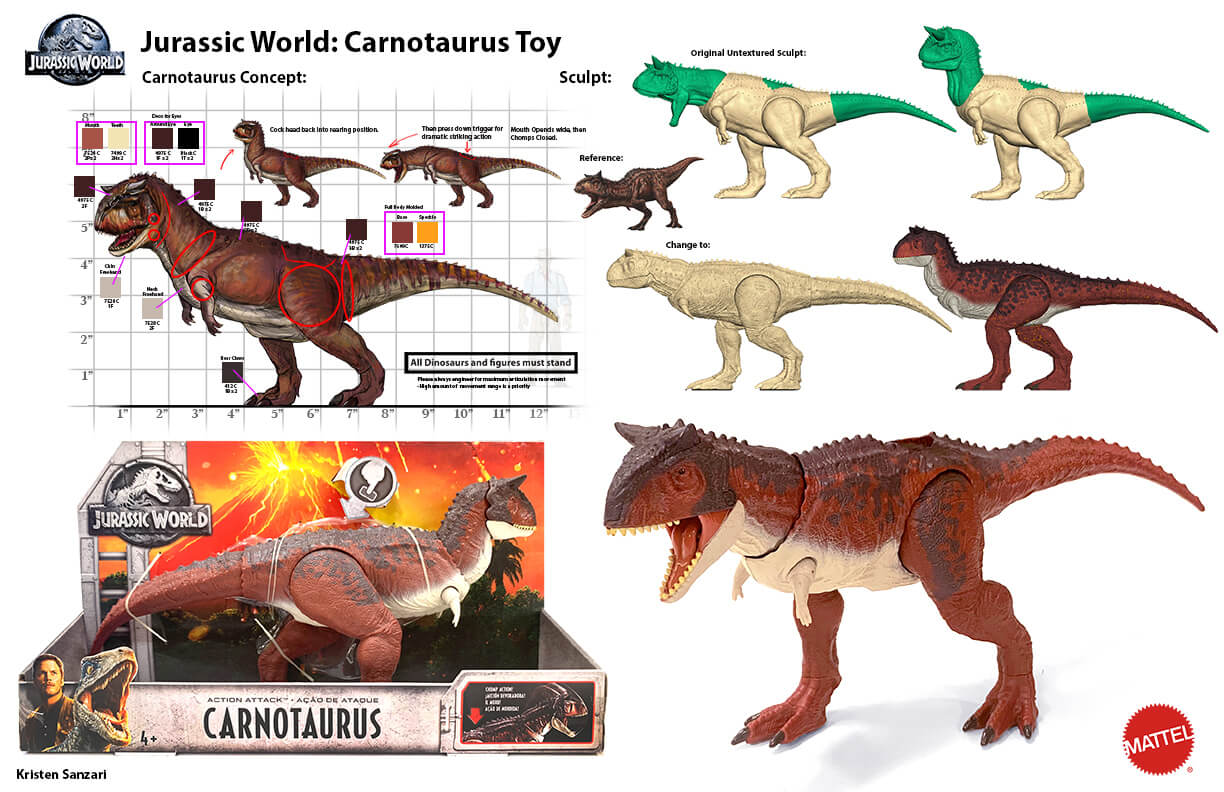
As you can see from many of these design sheets, we start off with an initial drawing of the dinosaur concept and what the feature will be. Sometimes these are based on assets from Universal, for dinosaurs from the films, and sometimes we are able to create the dinosaur designs ourselves. We spend a lot of time creating the patterns and textures, picking the colors of the dinos, and making sure they fit into the look and feel of the dinosaurs in Jurassic World. In the Carnotaurus example you can see that the drawing and the original sculpt are different from the final sculpt and product. This is because we often know what dinosaurs are going to be in the film before knowing exactly what the dinosaurs are going to look like in the film. The toy production timeline is longer than the time it takes to make a film and so often we need to begin our design process before we have all the information. We frequently have to figure out the feature of the toy prior to knowing exactly what the dinosaur will look like, and we just have to be nimble and adjust our designs to fit the look of the movie as soon as we do get the actual assets. Our partners at Universal always do their best to get us the assets and information we need as soon as they can.
Once we have a sculpt we are happy with, and the mechanism is figured out, we can make our first model. The first model is never perfect, but we use it to see if we need to change anything about the sculpt and details, the mechanism function, the articulation, and the color choices. We then take notes on any revisions and make adjustments to improve this model. After all the changes have been accounted for we make a new and improved model. During the entire process there are multiple check points with Universal to make sure they approve the look and function of the dinosaurs.
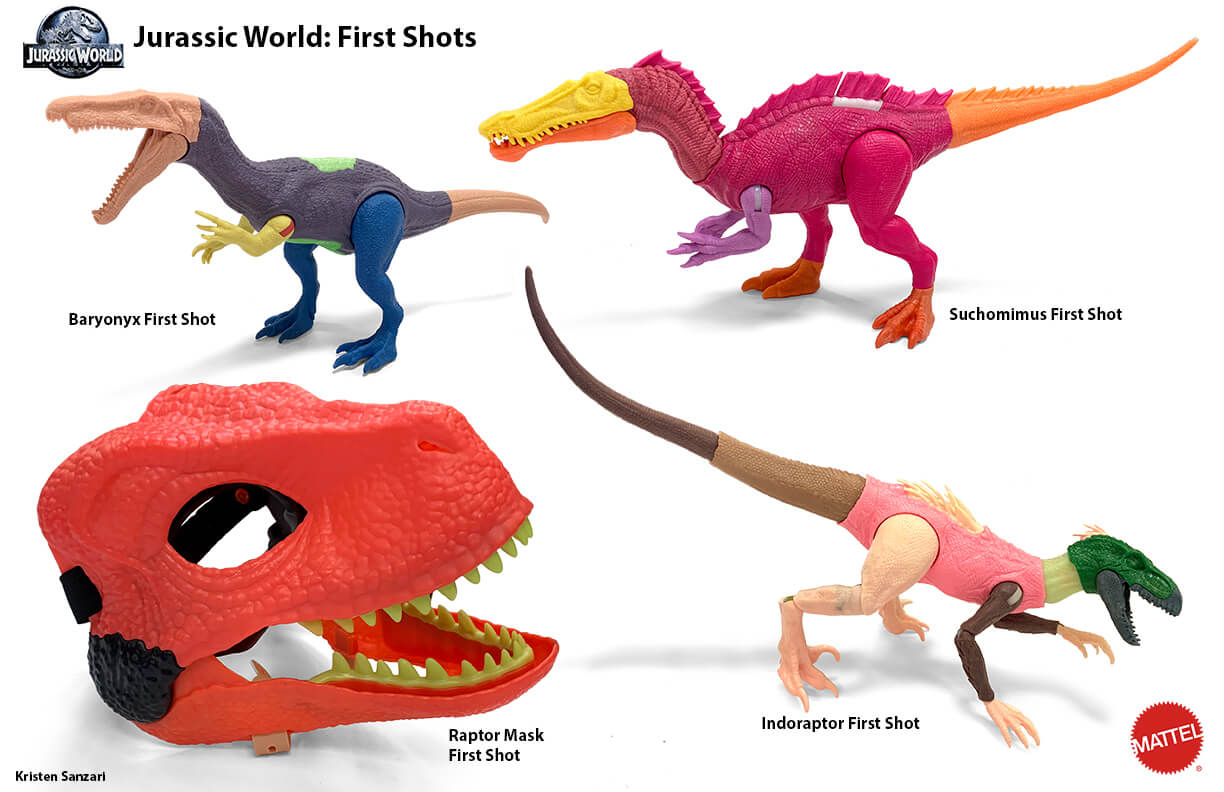
When the final model is approved we move on to make a “first shot,” which is the first run of the product in plastic. First shots are made in the factories with any leftover or extra plastic they have, so they usually are really crazy colors. For example, we could get a raptor first shot with a pink body, black left leg, blue right leg, green head, and neon yellow arms. We make comments on the first shot and make sure the toy can stand and that the detents and articulations function properly. Next we get our first painted plastic toy sample. At this point the toy is almost complete, but we make sure the plastic and paint colors match, we make sure the mechanism and any electronic features are functioning the way they should, and make sure all the packaging information is aligned with the product. After all these comments are captured we pass them along to make sure our final product is the best it can be. Then, finally we receive the final product!
As a whole the toy design process takes an entire team and I have to say that team Jurassic is made up of some of the most passionate and hard-working people I know. Our design team couldn’t make the toys we do without the enormous help of our awesome marketing team, packaging team, and engineering team. It is truly a team effort and an awesome brand to be a part of.”
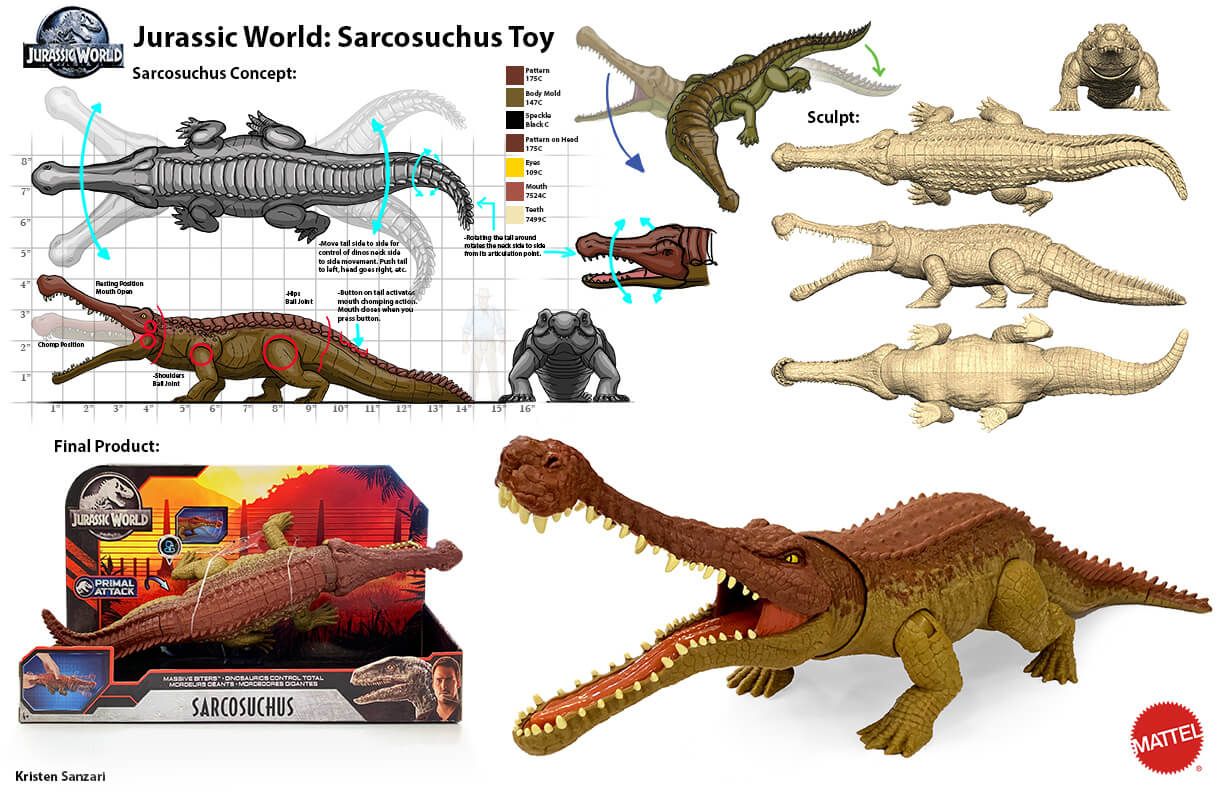
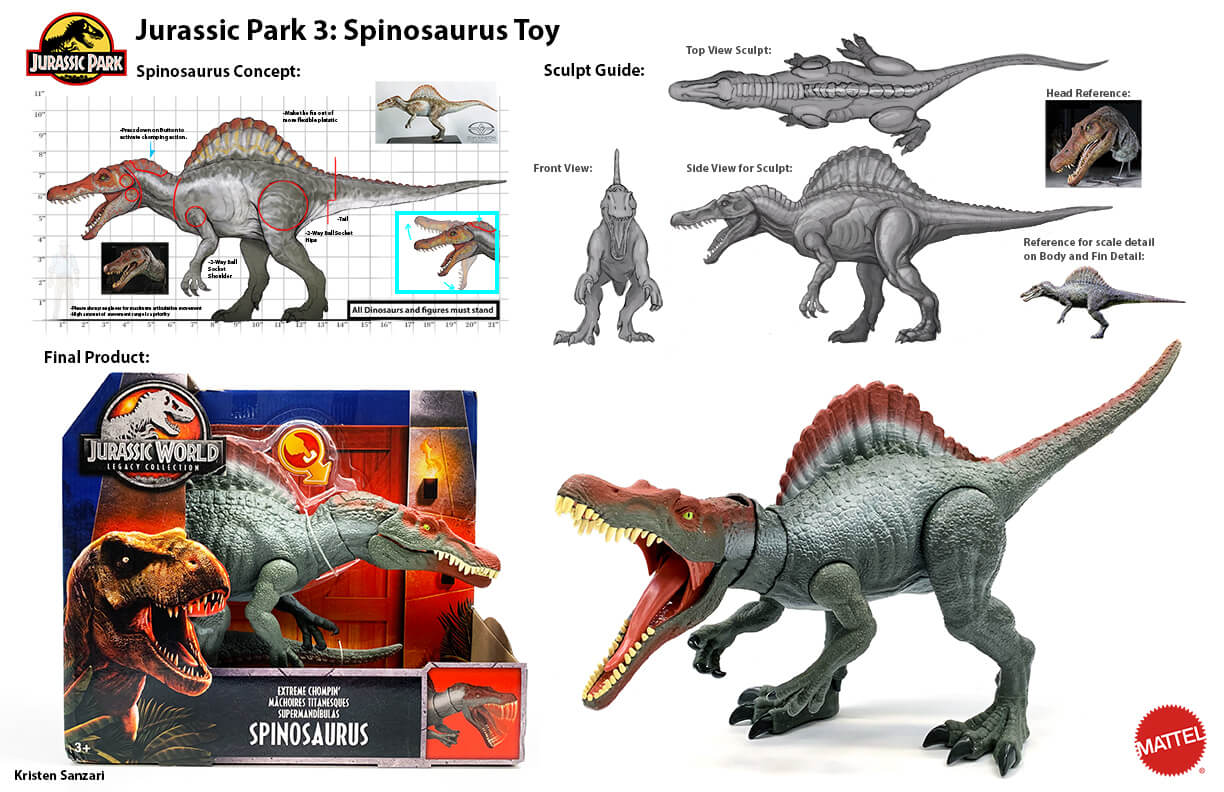
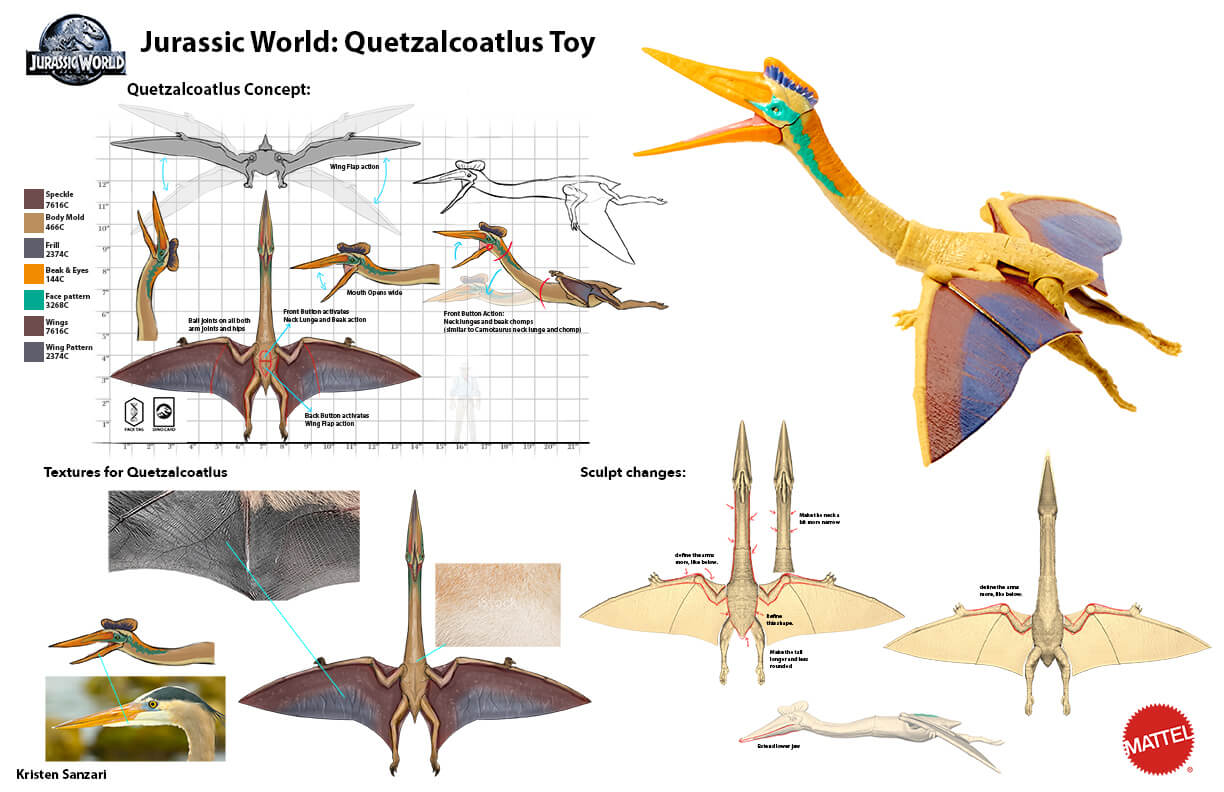
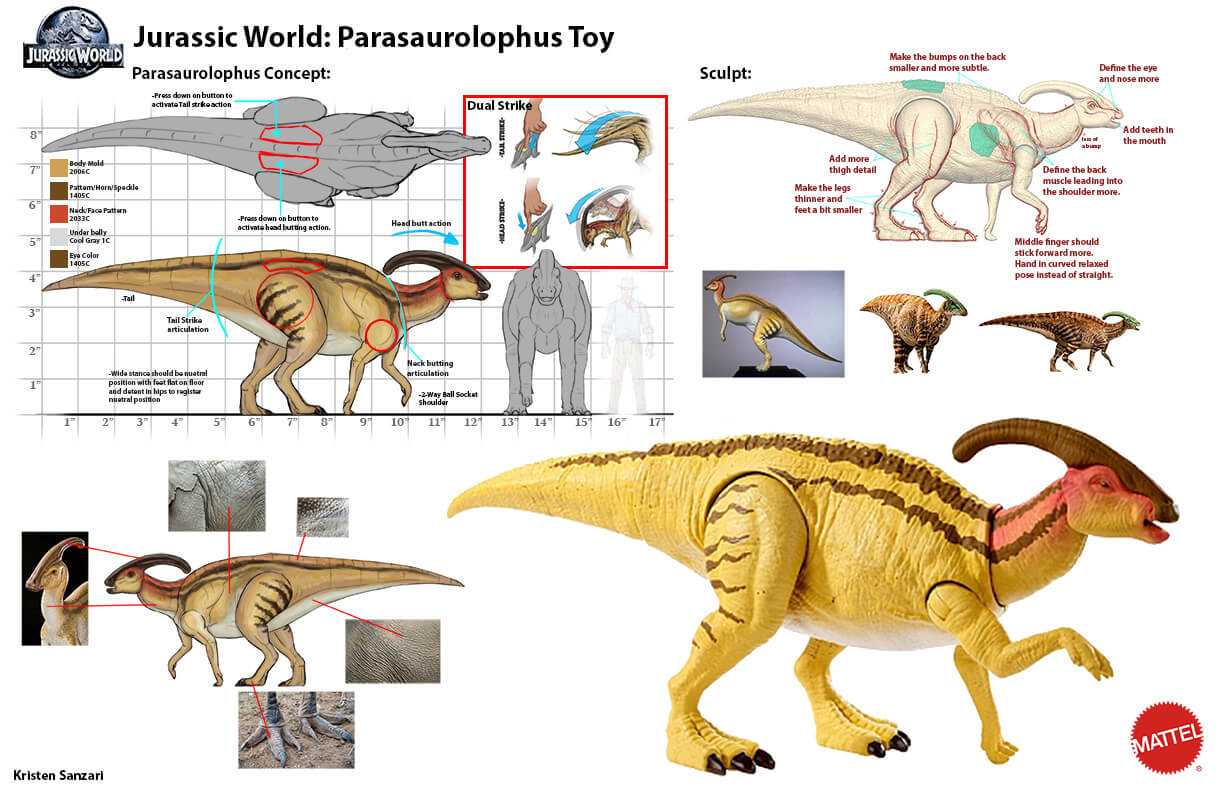
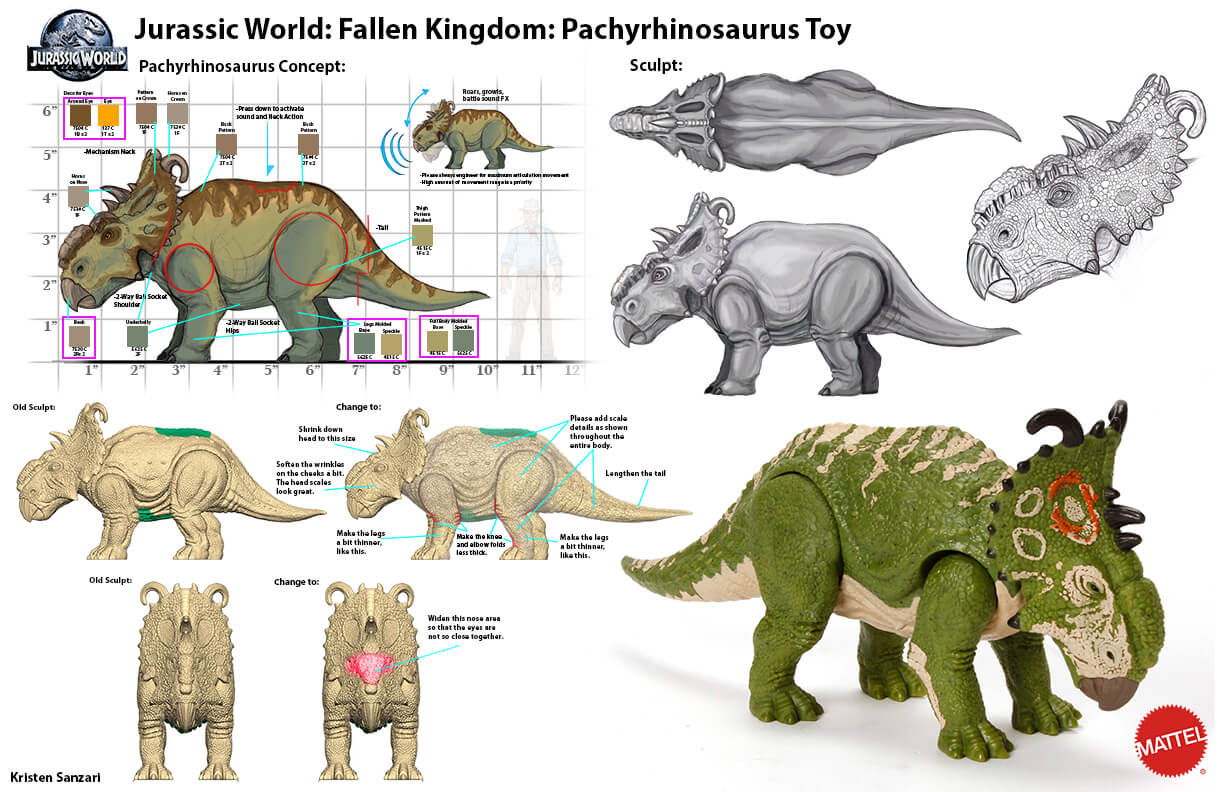
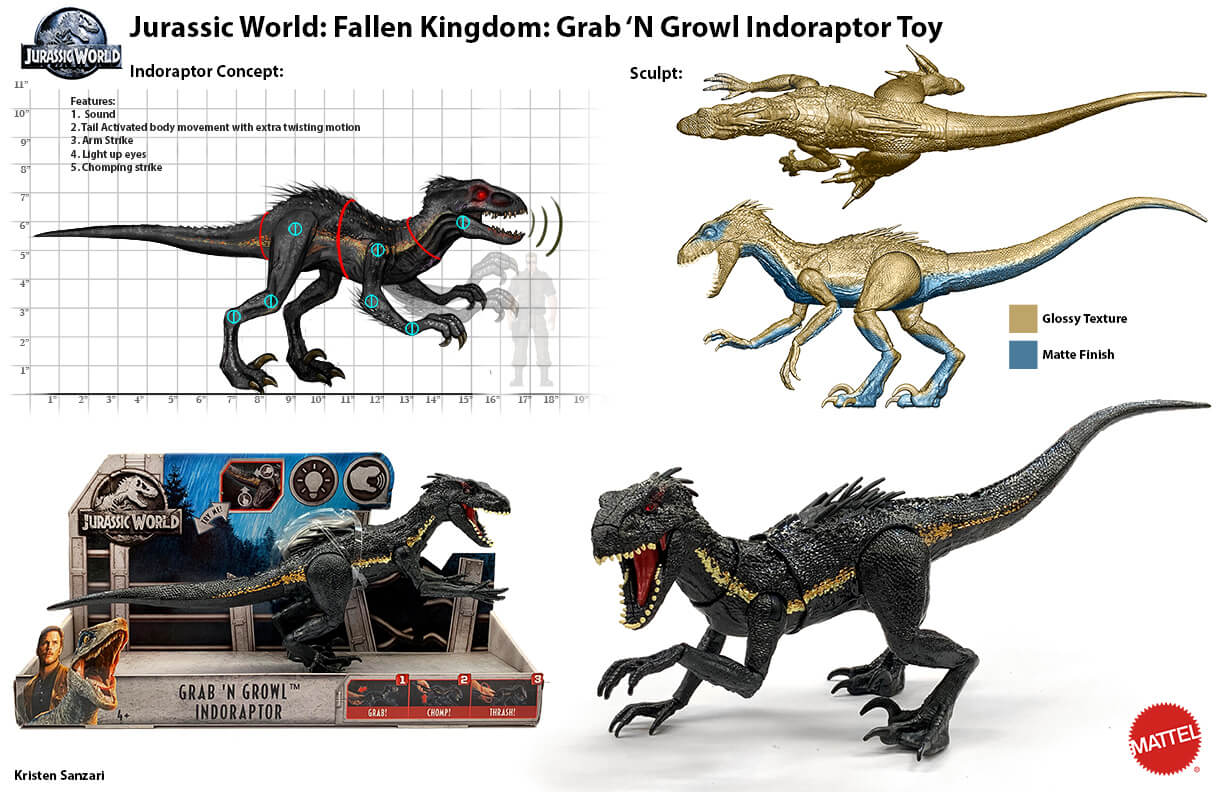
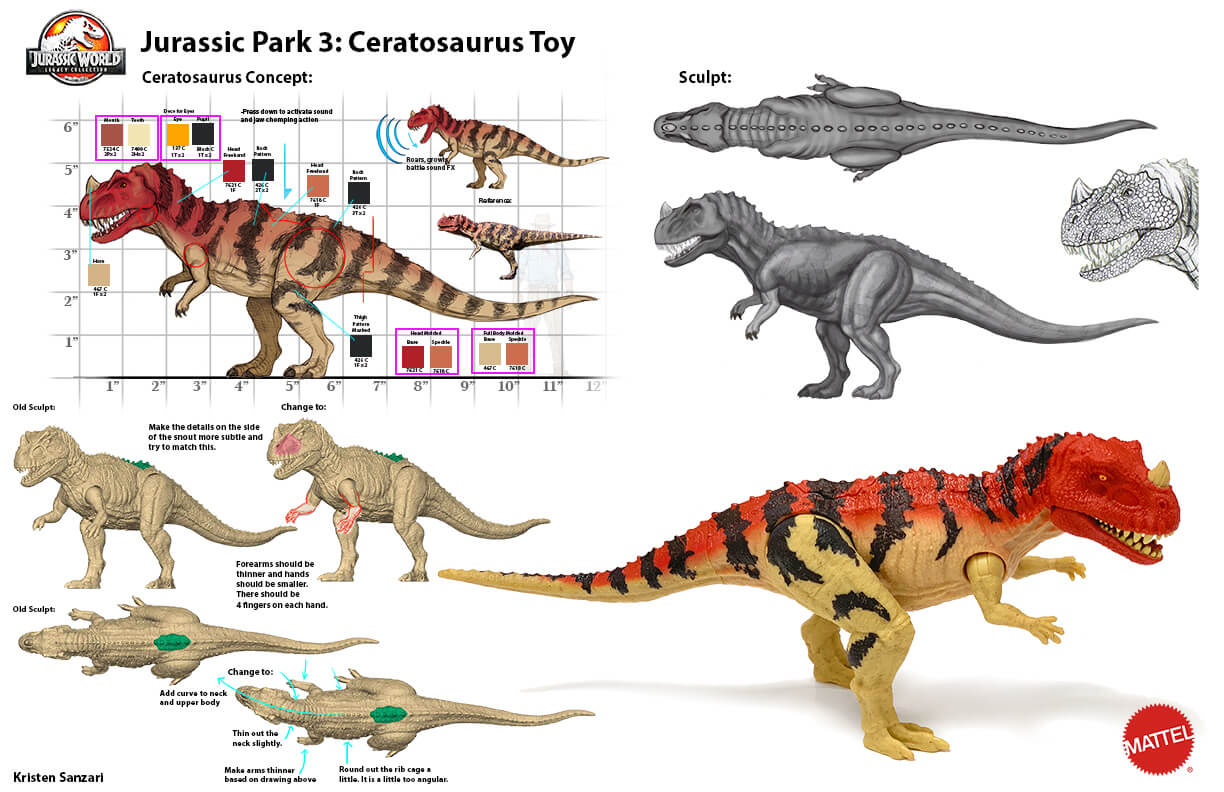
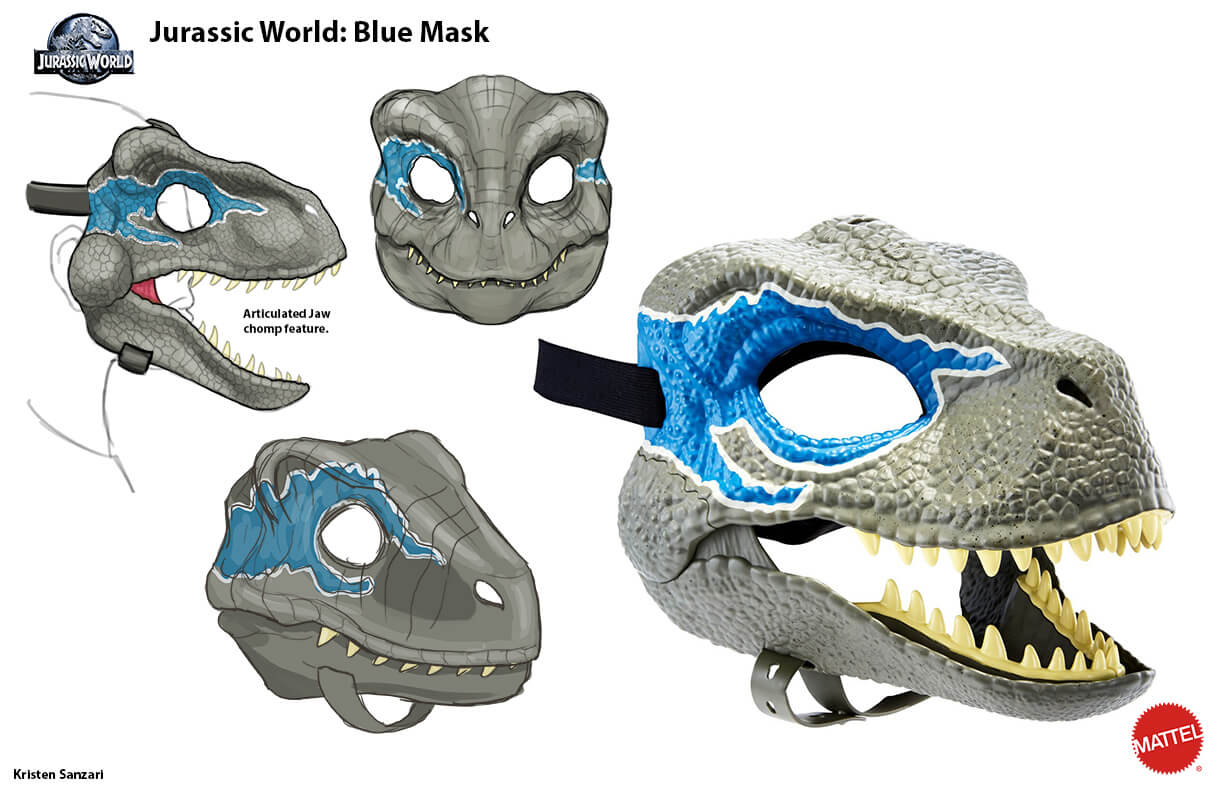
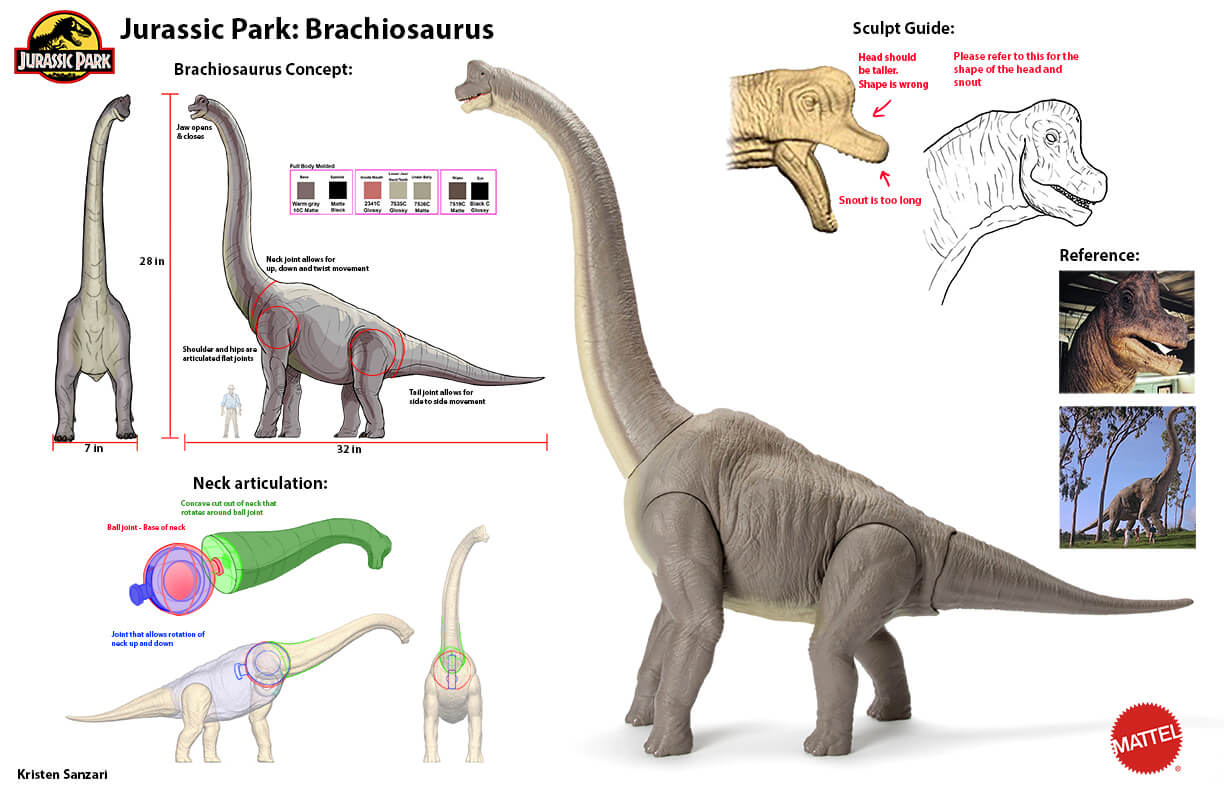
Thanks so much to Kristen for taking the time out to speak with us, and to share many of these images! For more from Kristen, you can check out her website here and her Instagram here. With the 2020 Primal Attack line coming soon (which the Sarcosuchus belongs to) , there will surely be more toys to learn about in the future!
What toy do you like the most from Mattel’s line, and what would you like to see more of? Sound off in the comments below, and as always, stay tuned to Jurassic Outpost!
